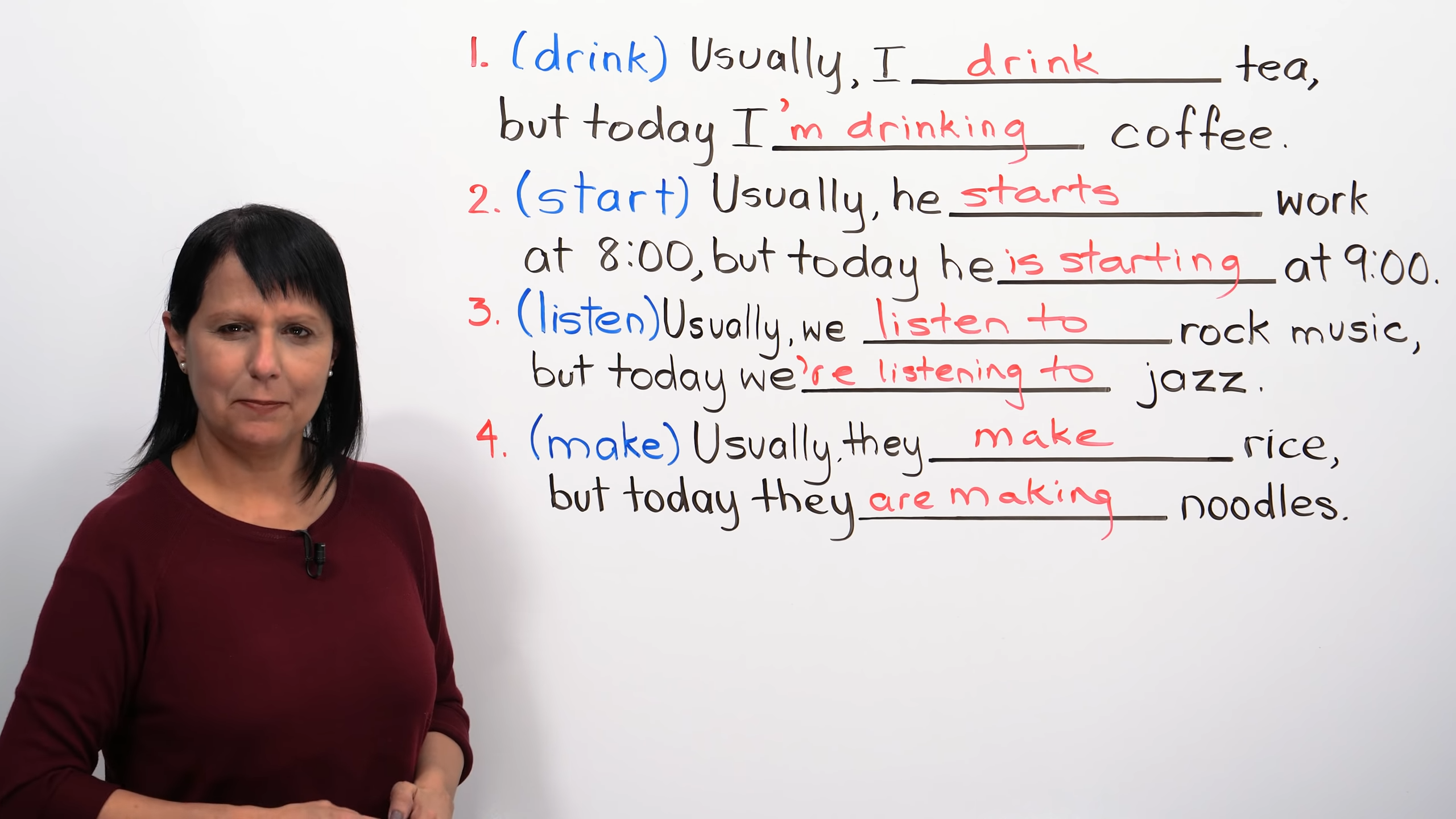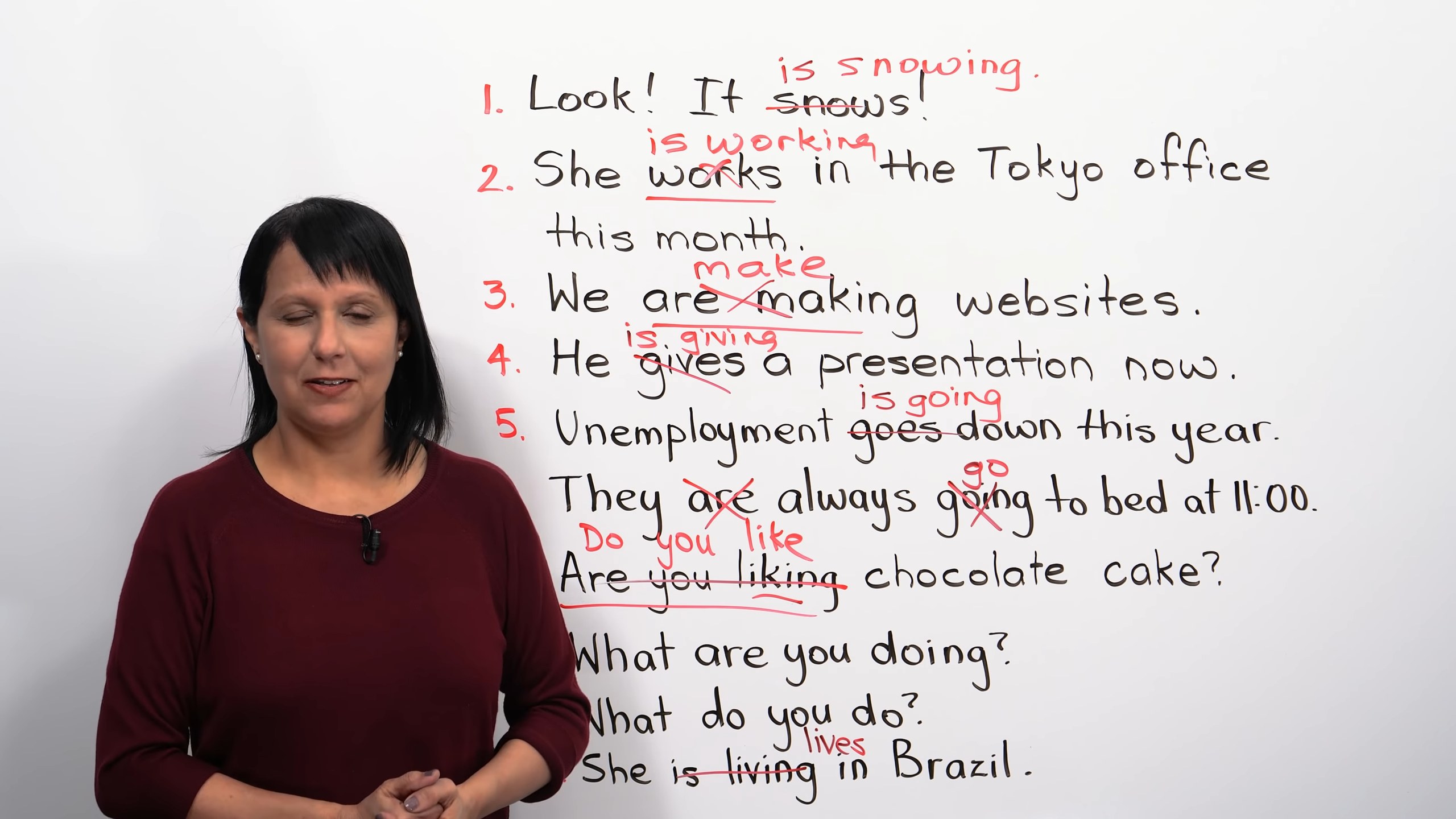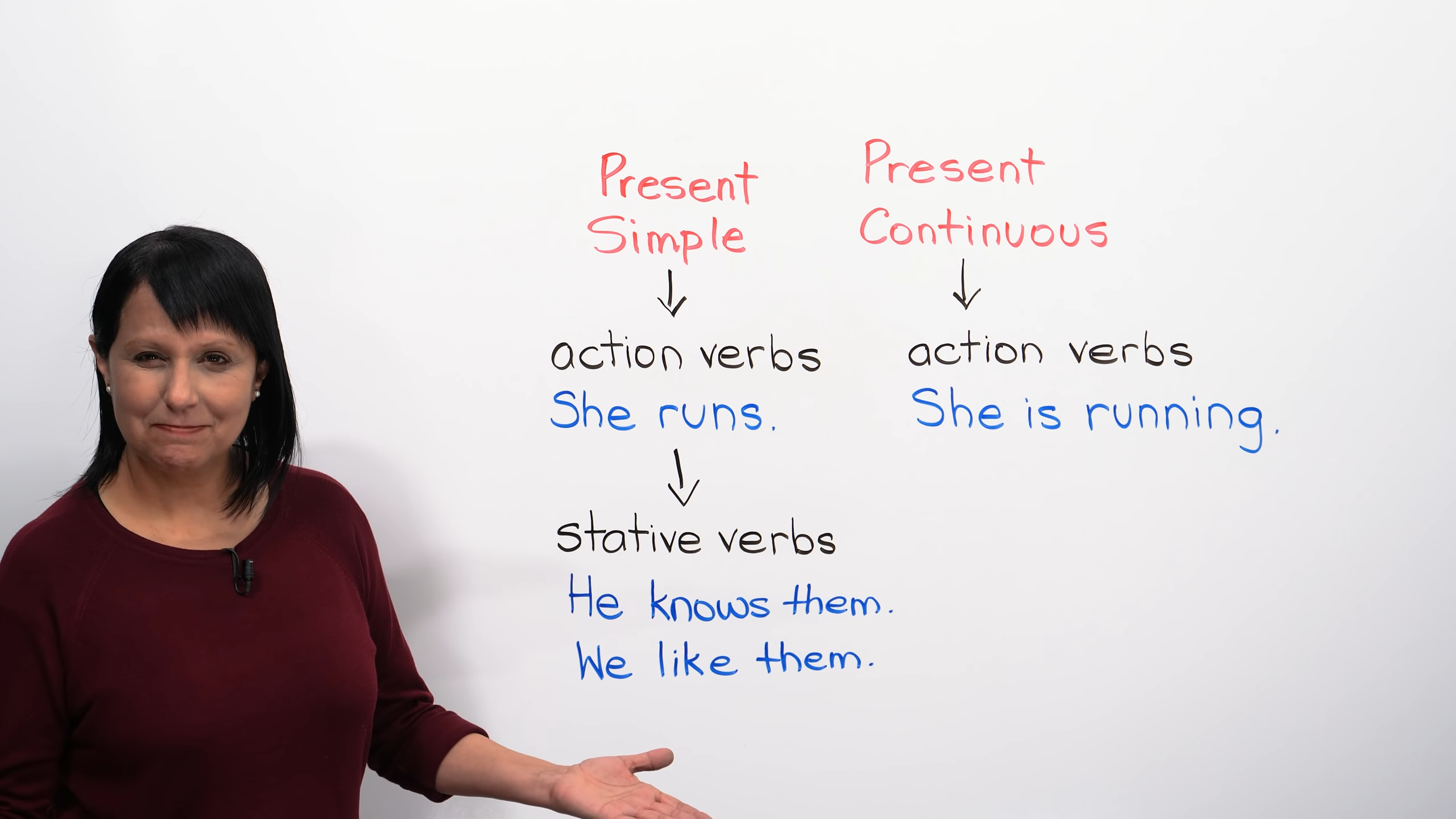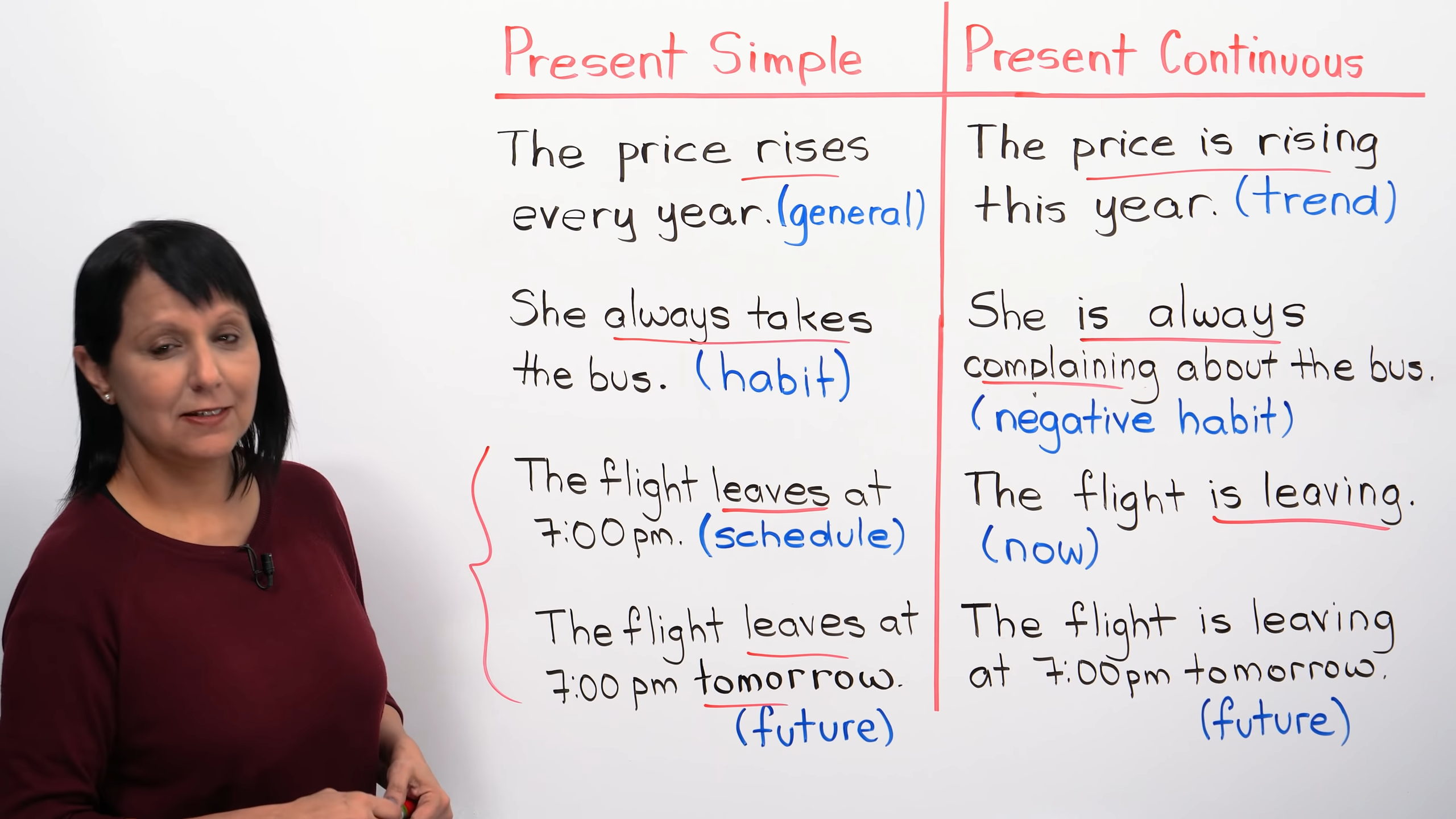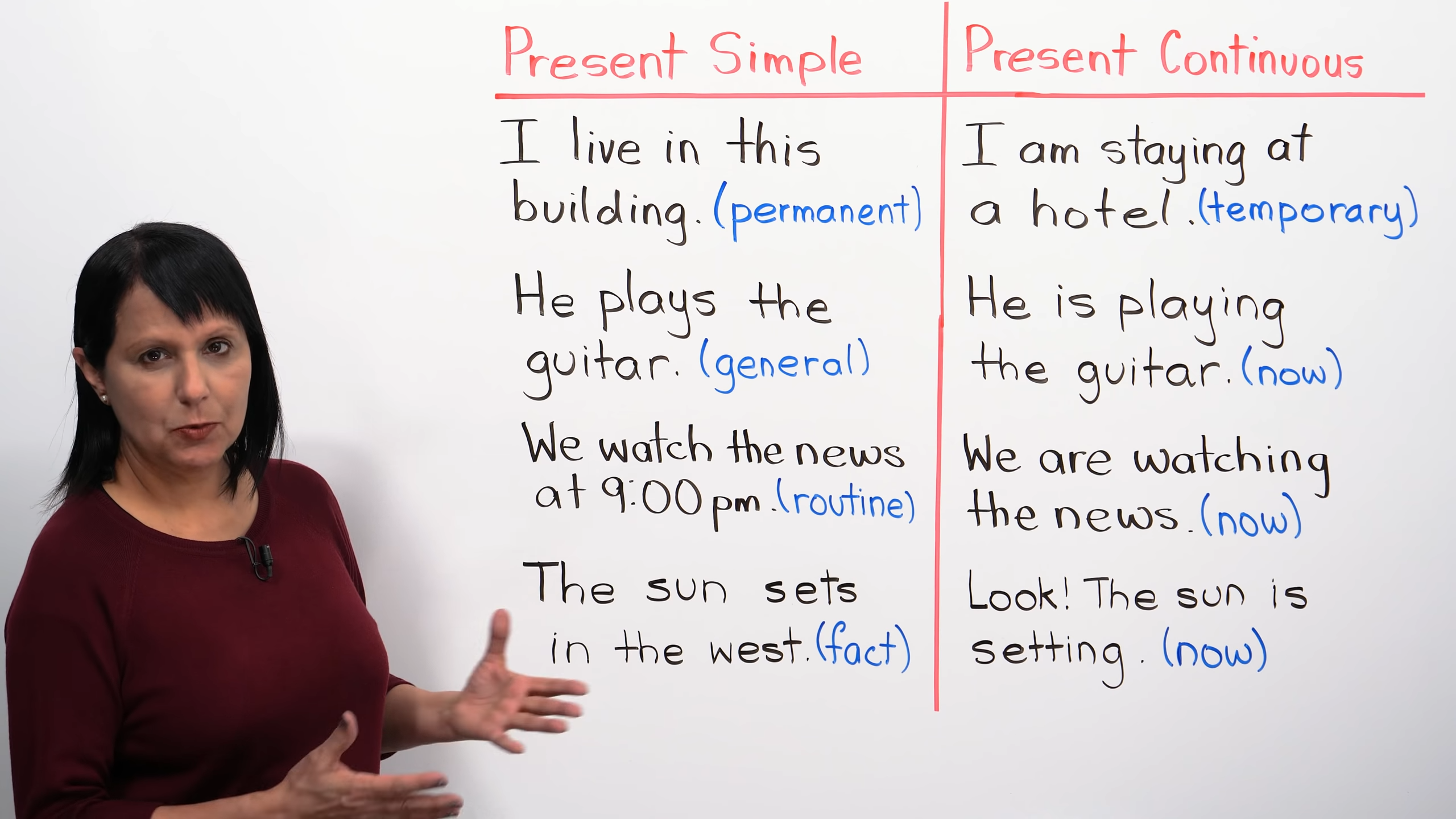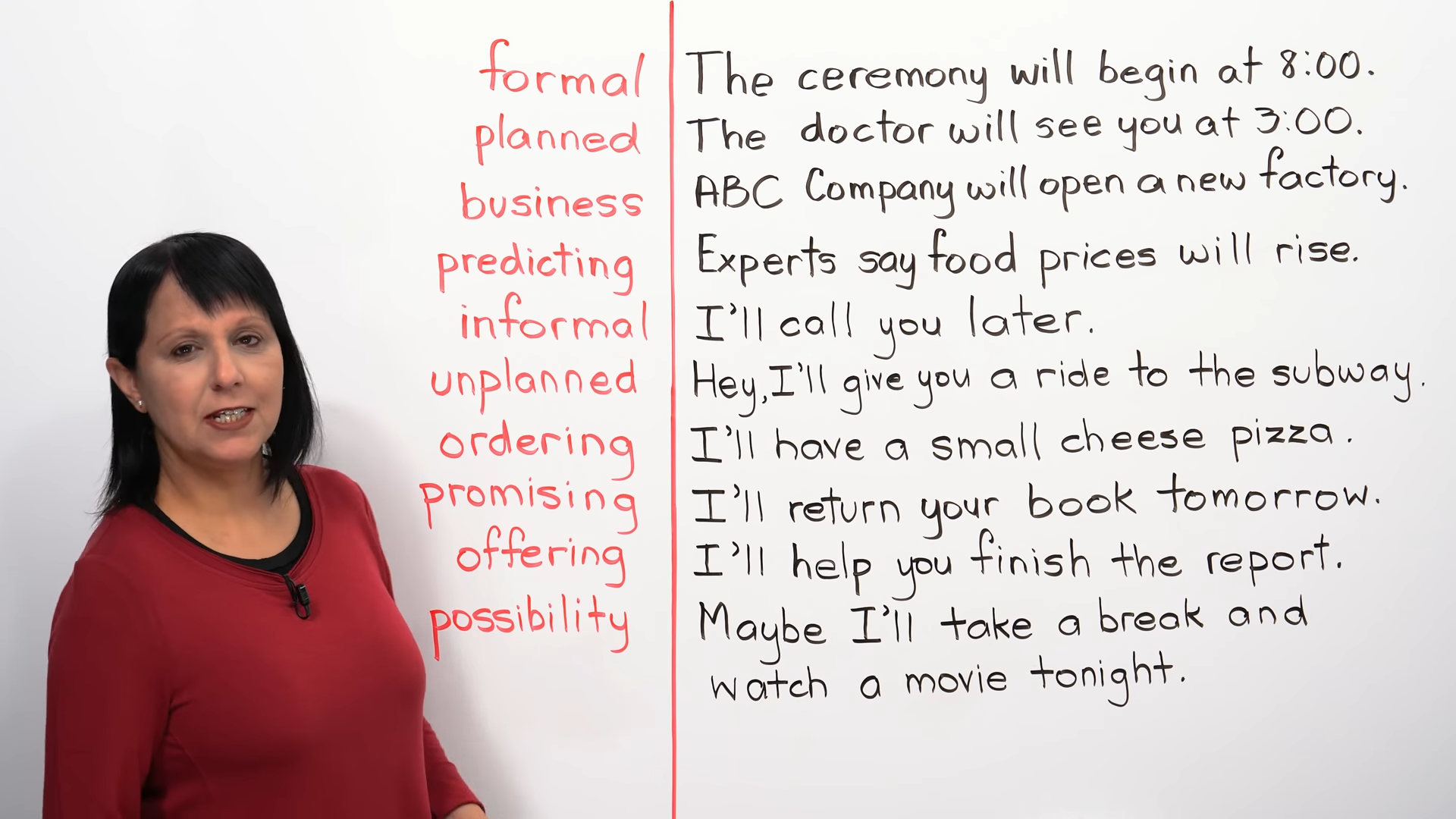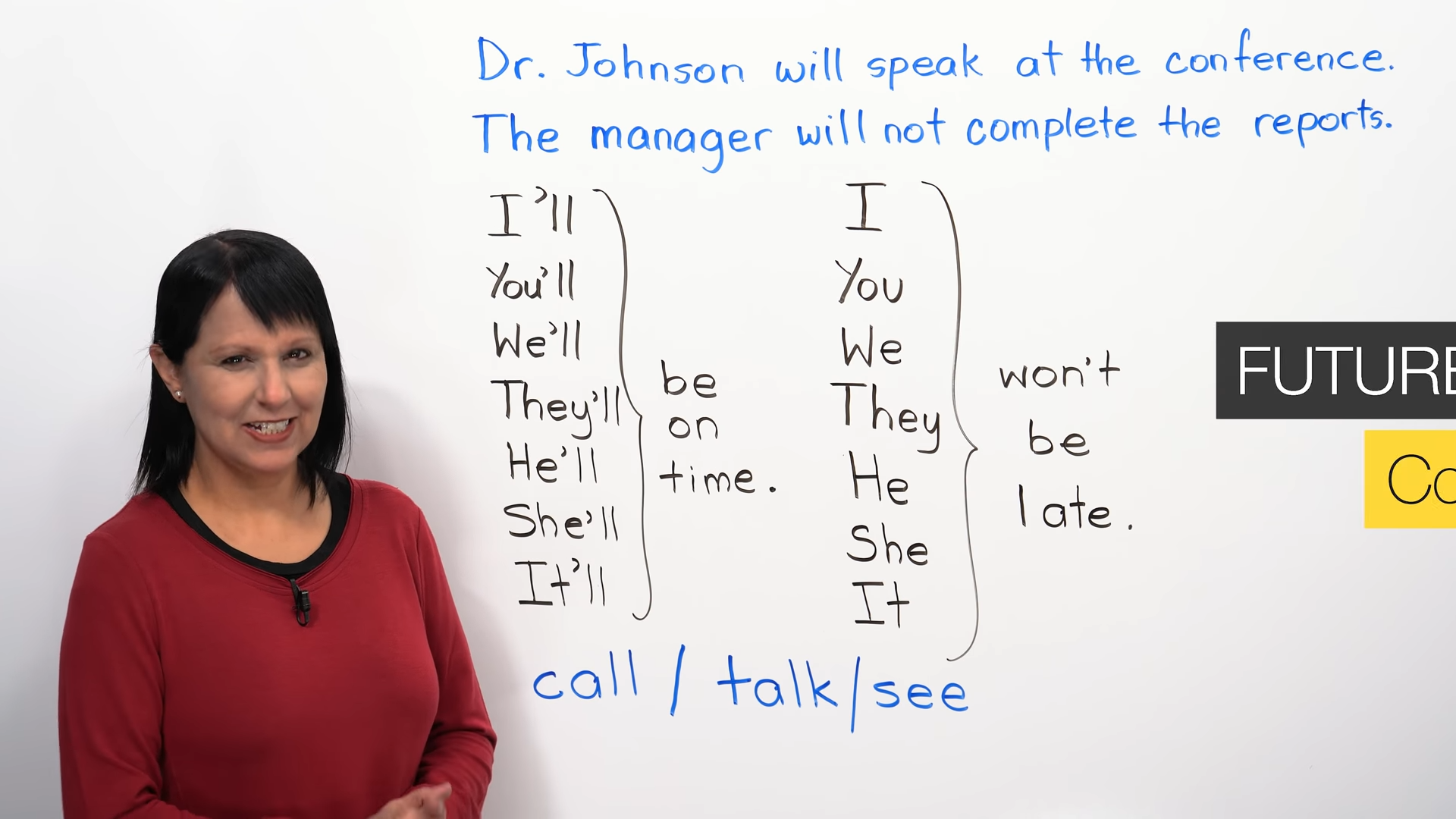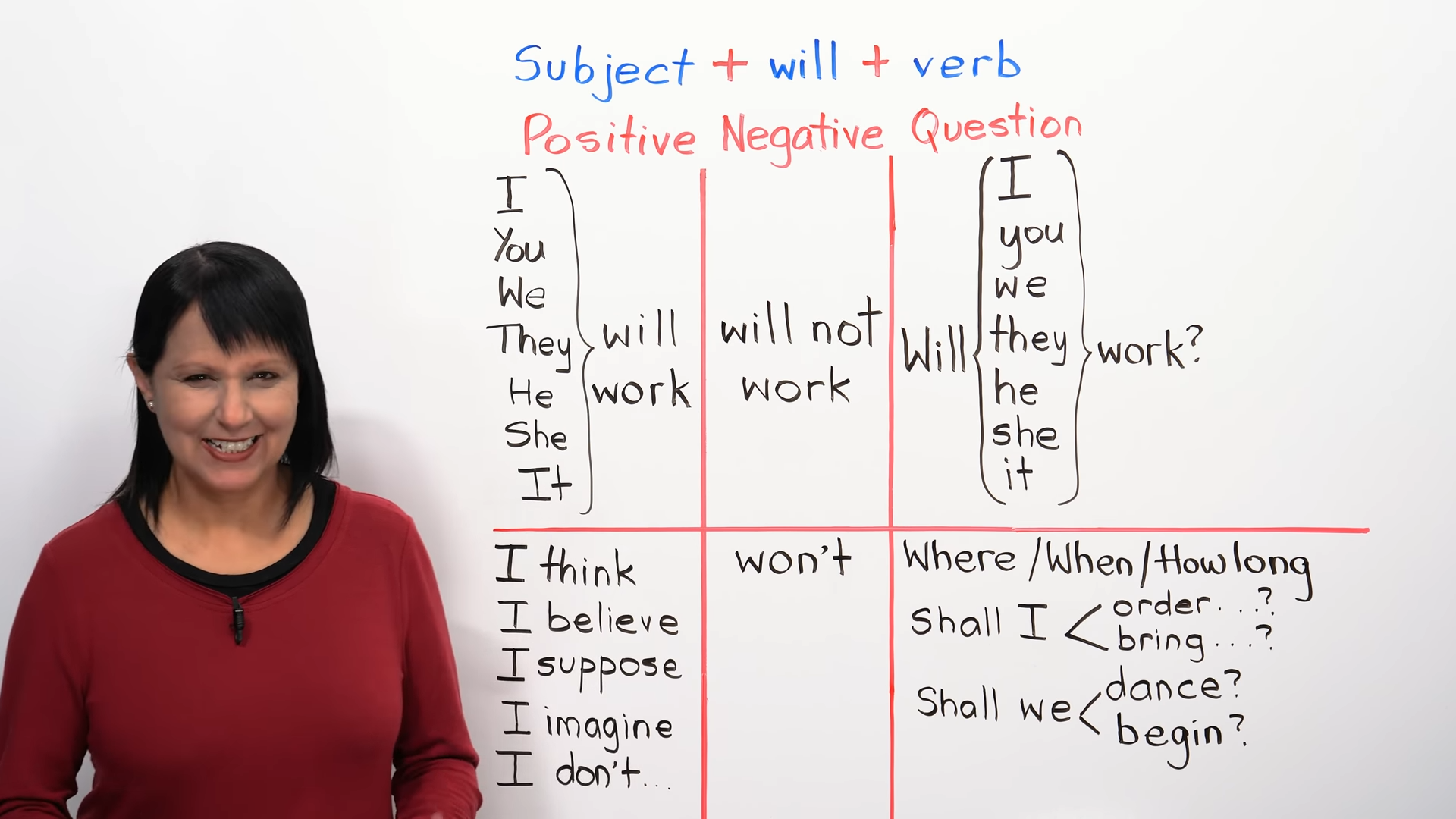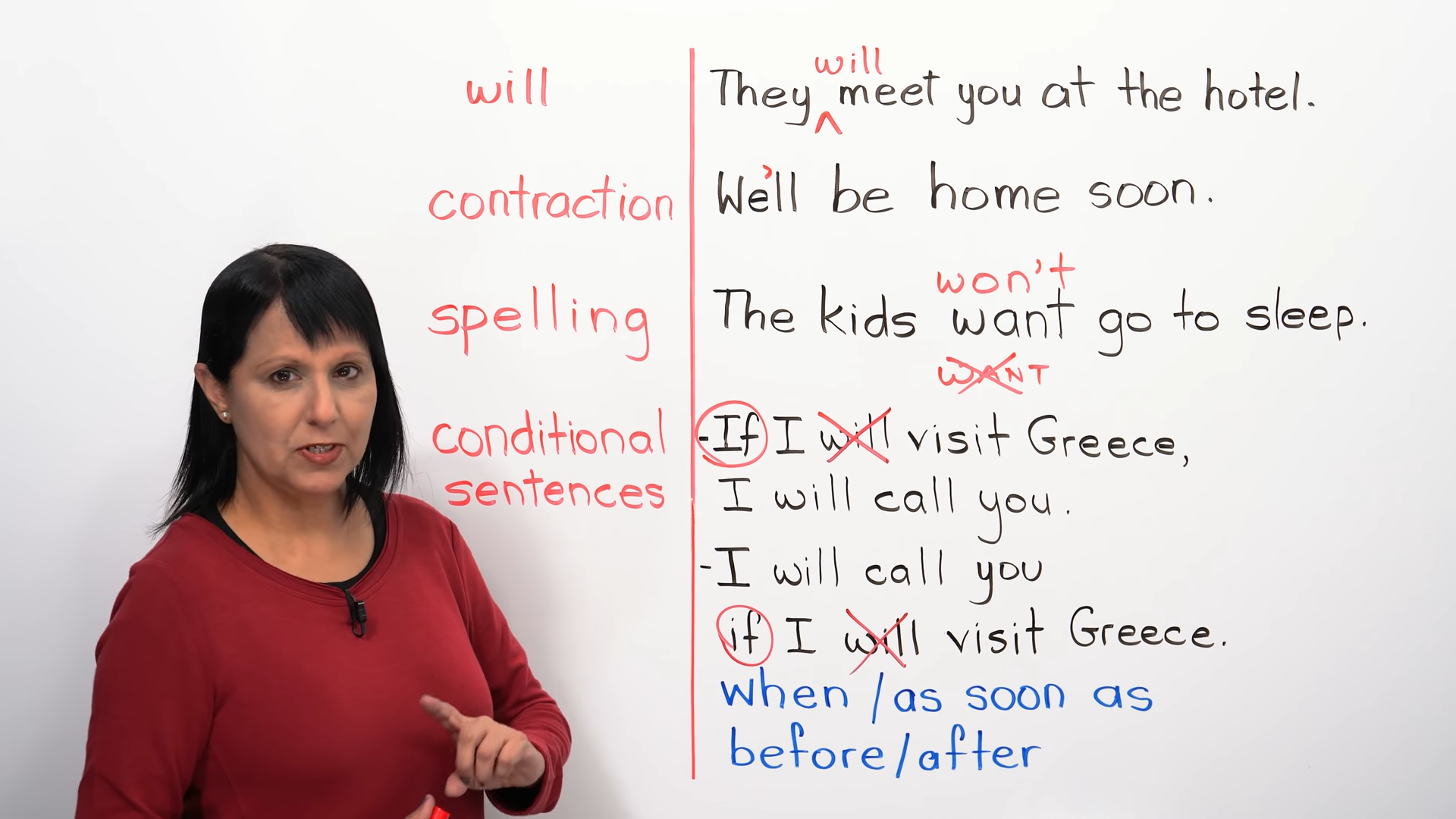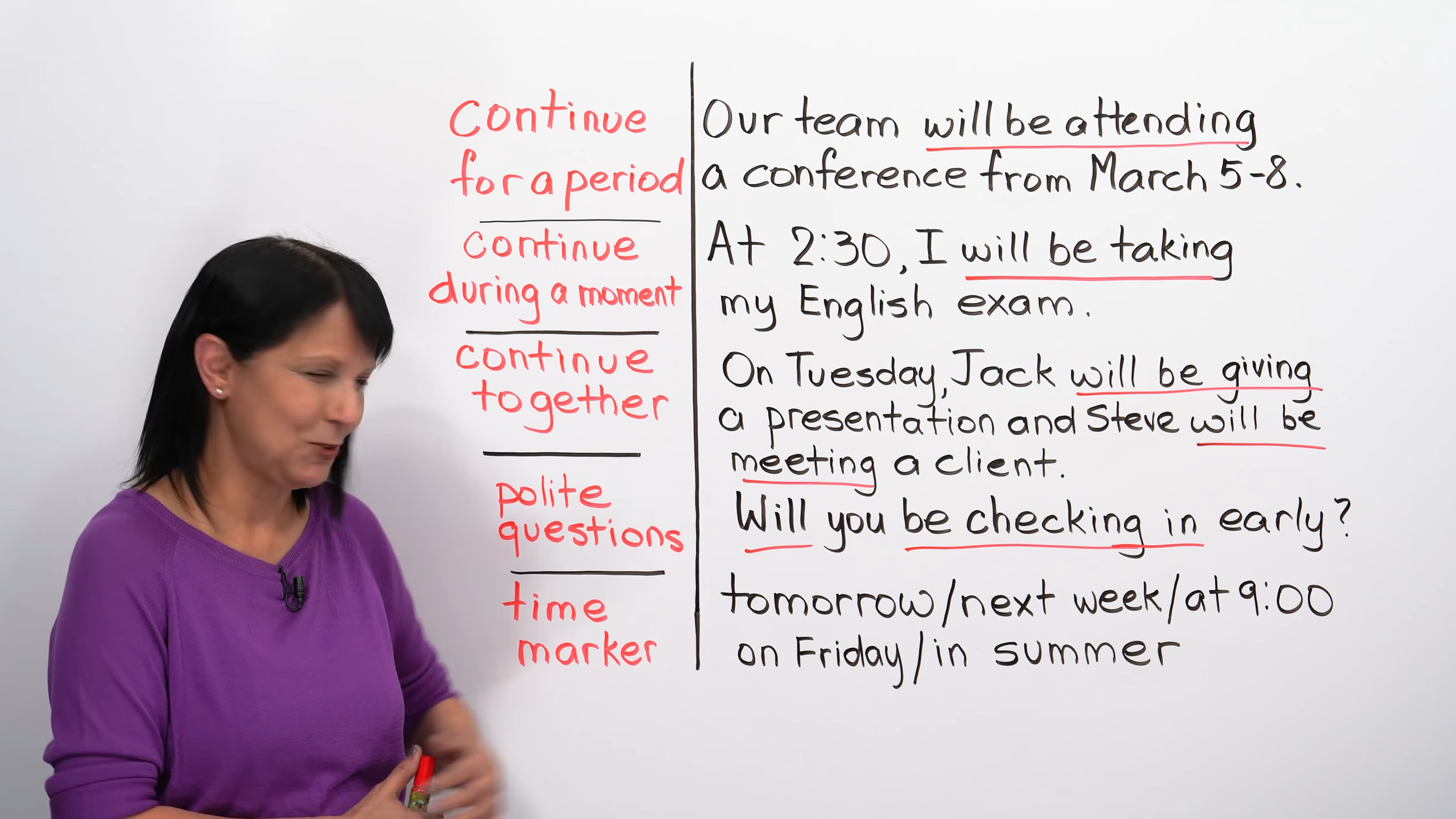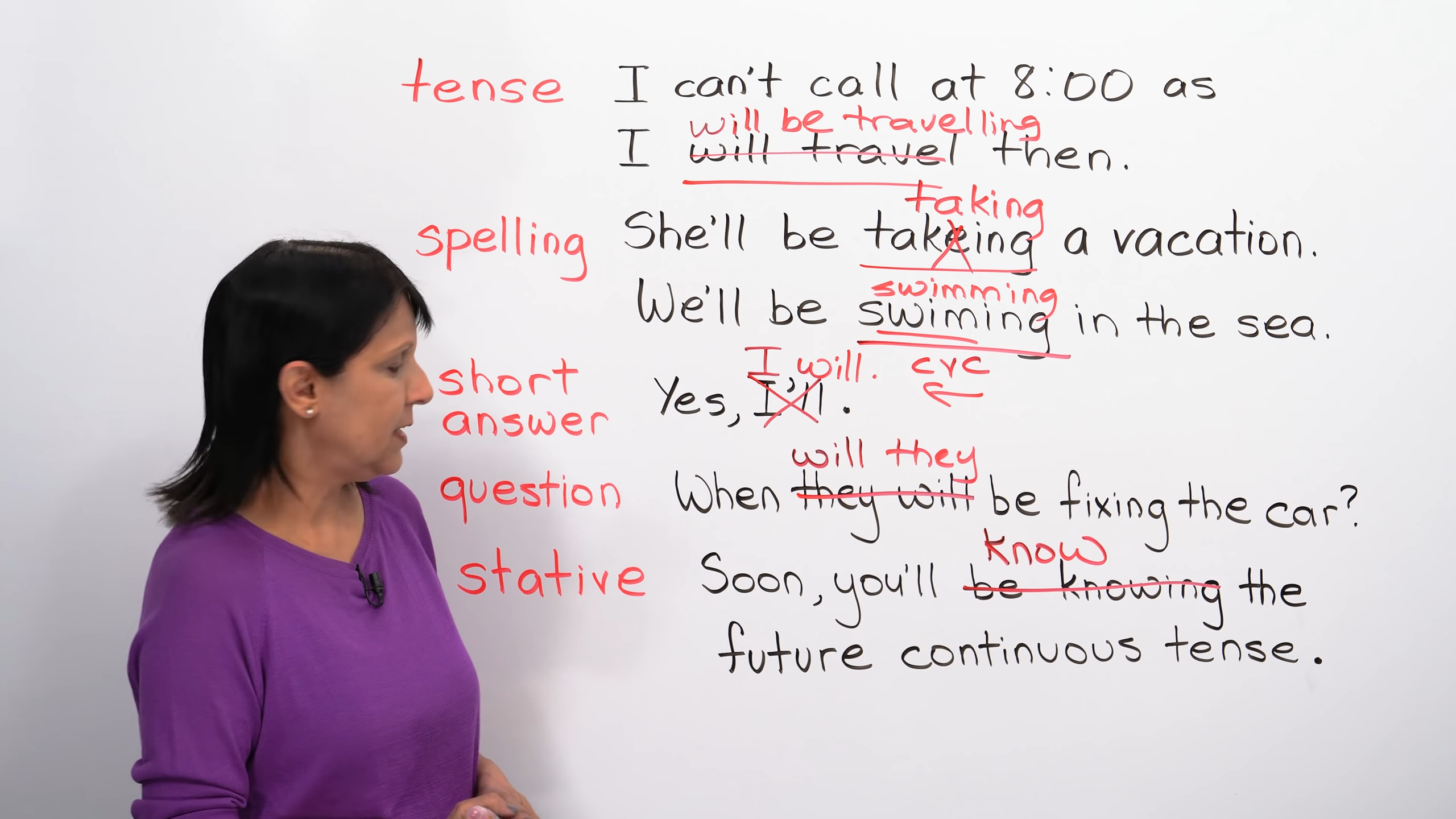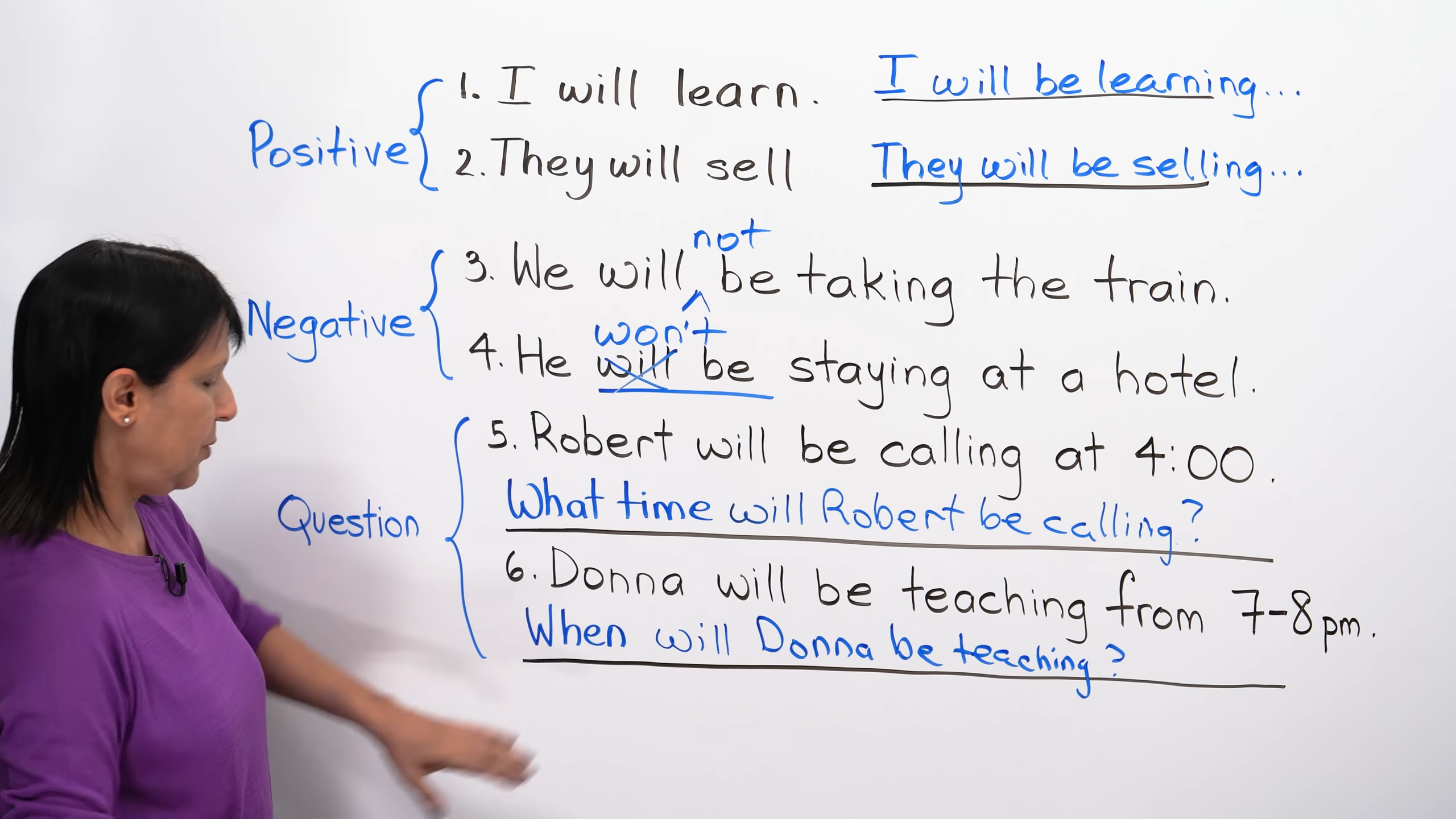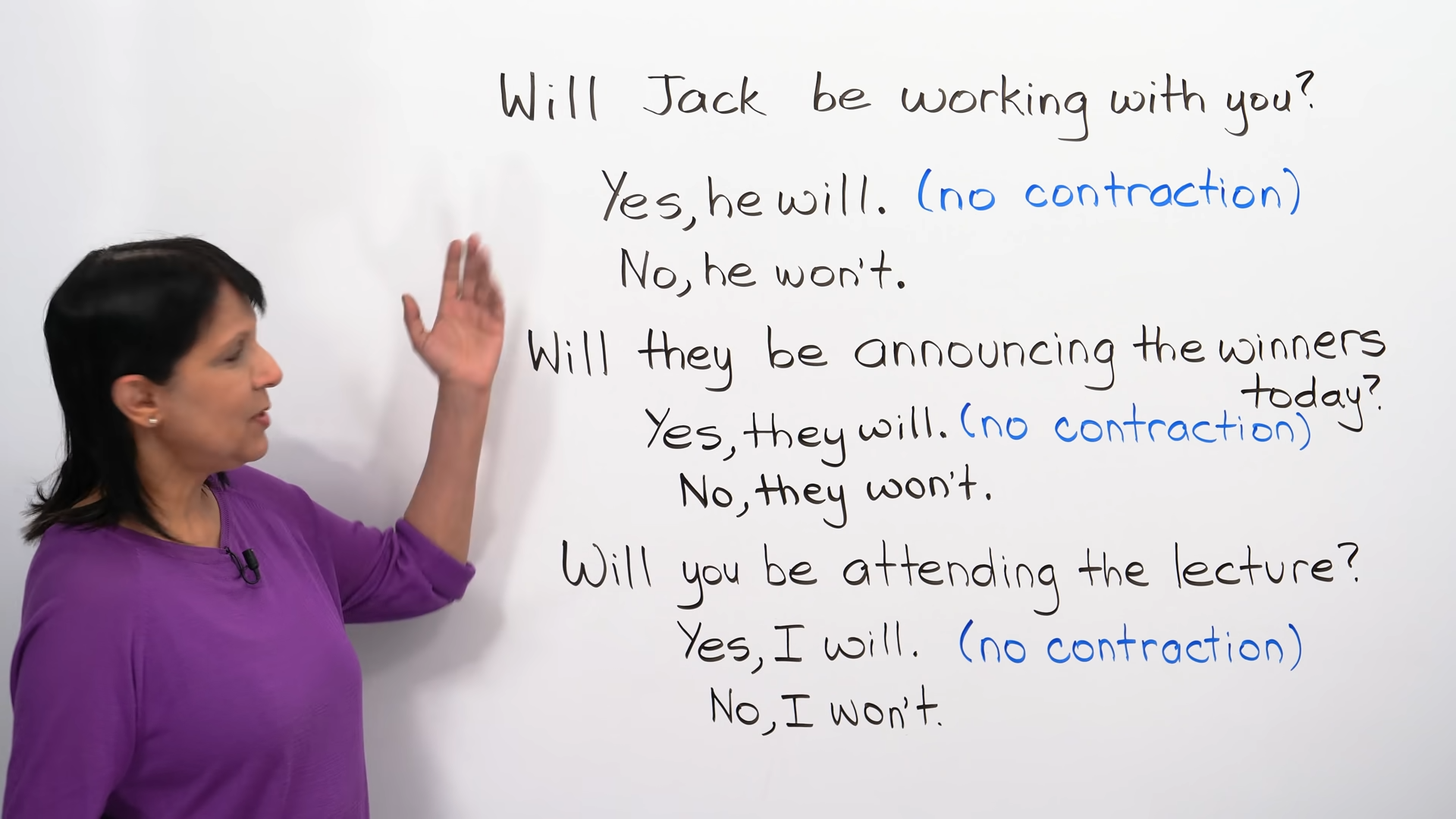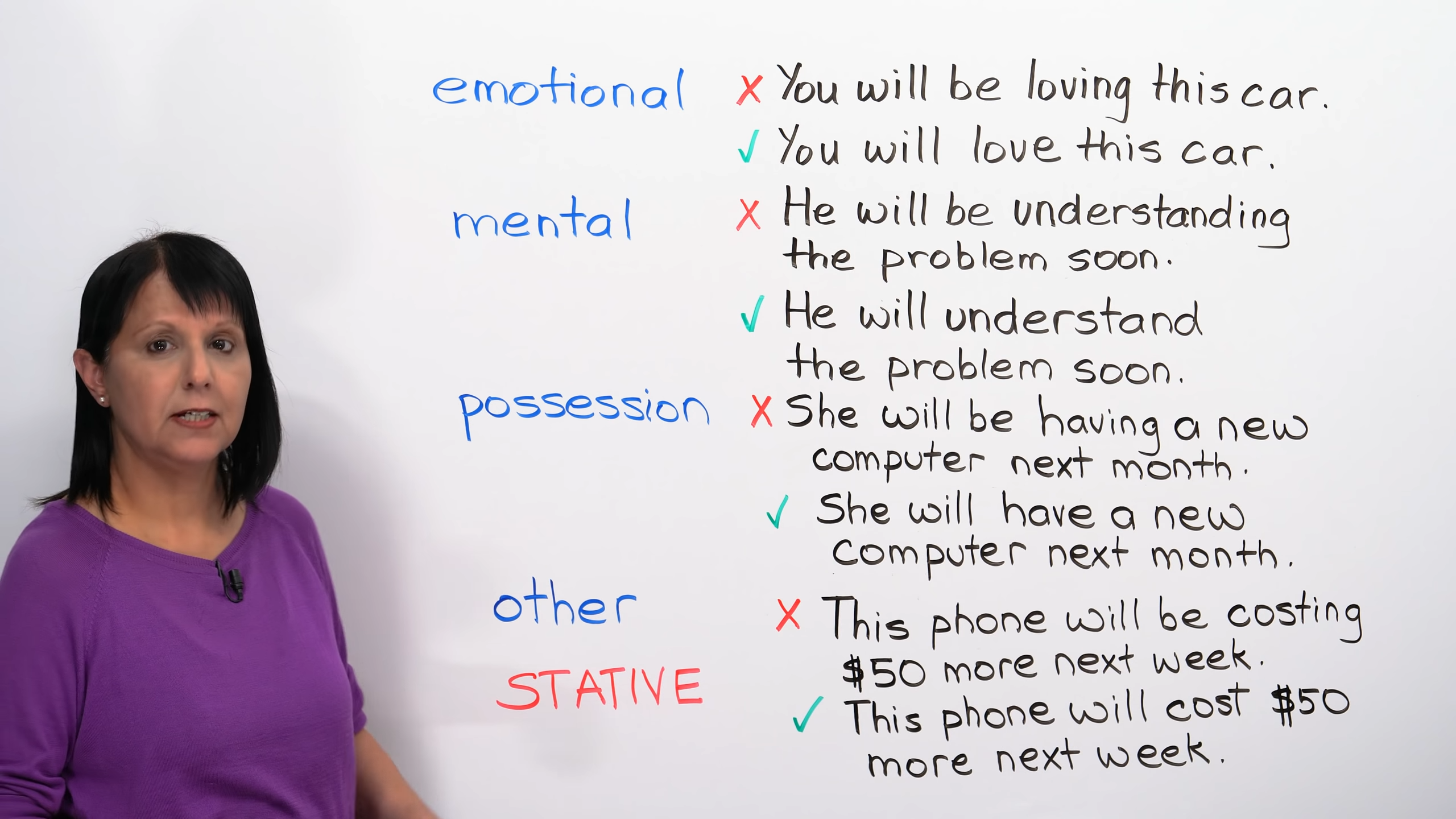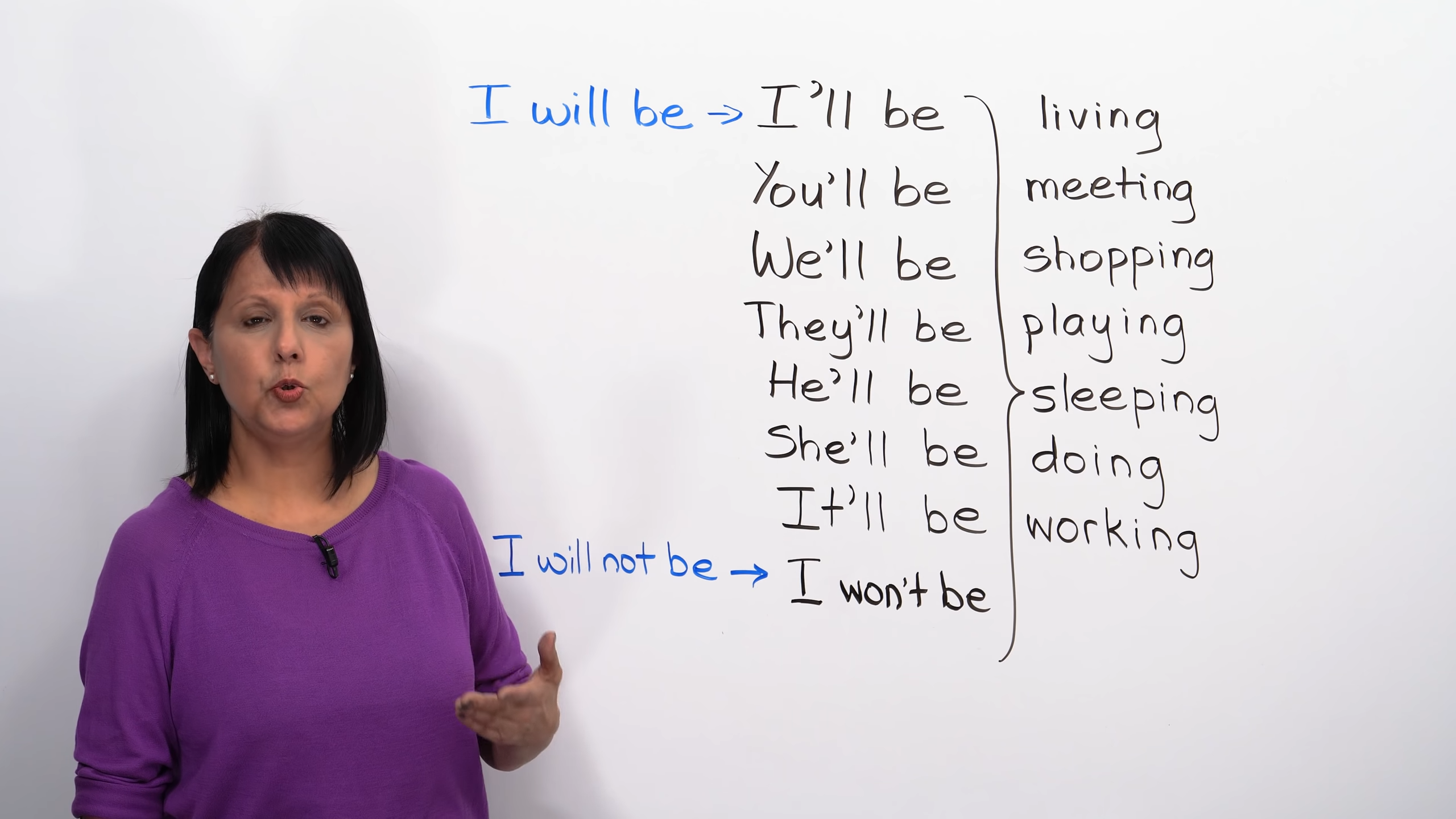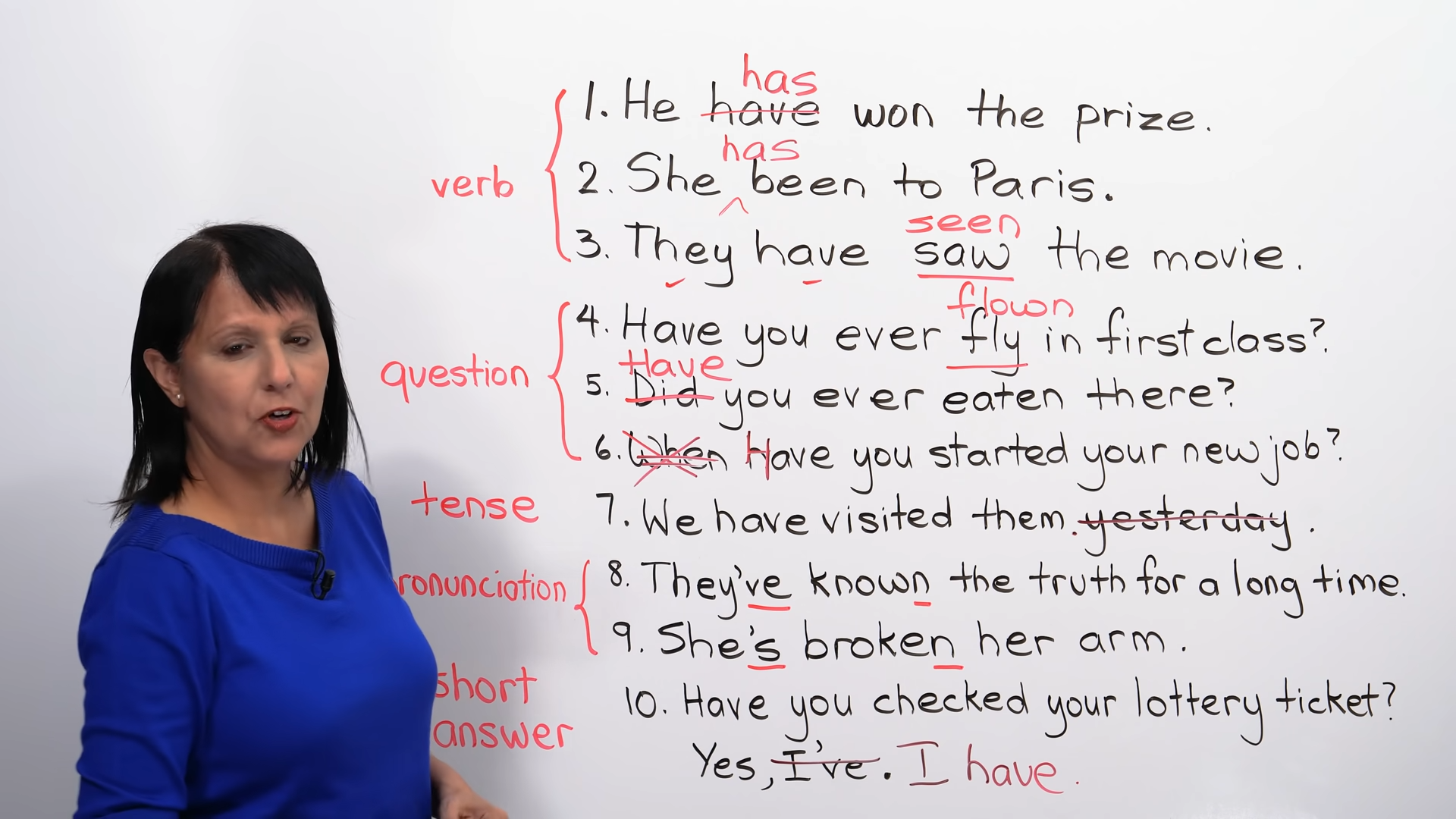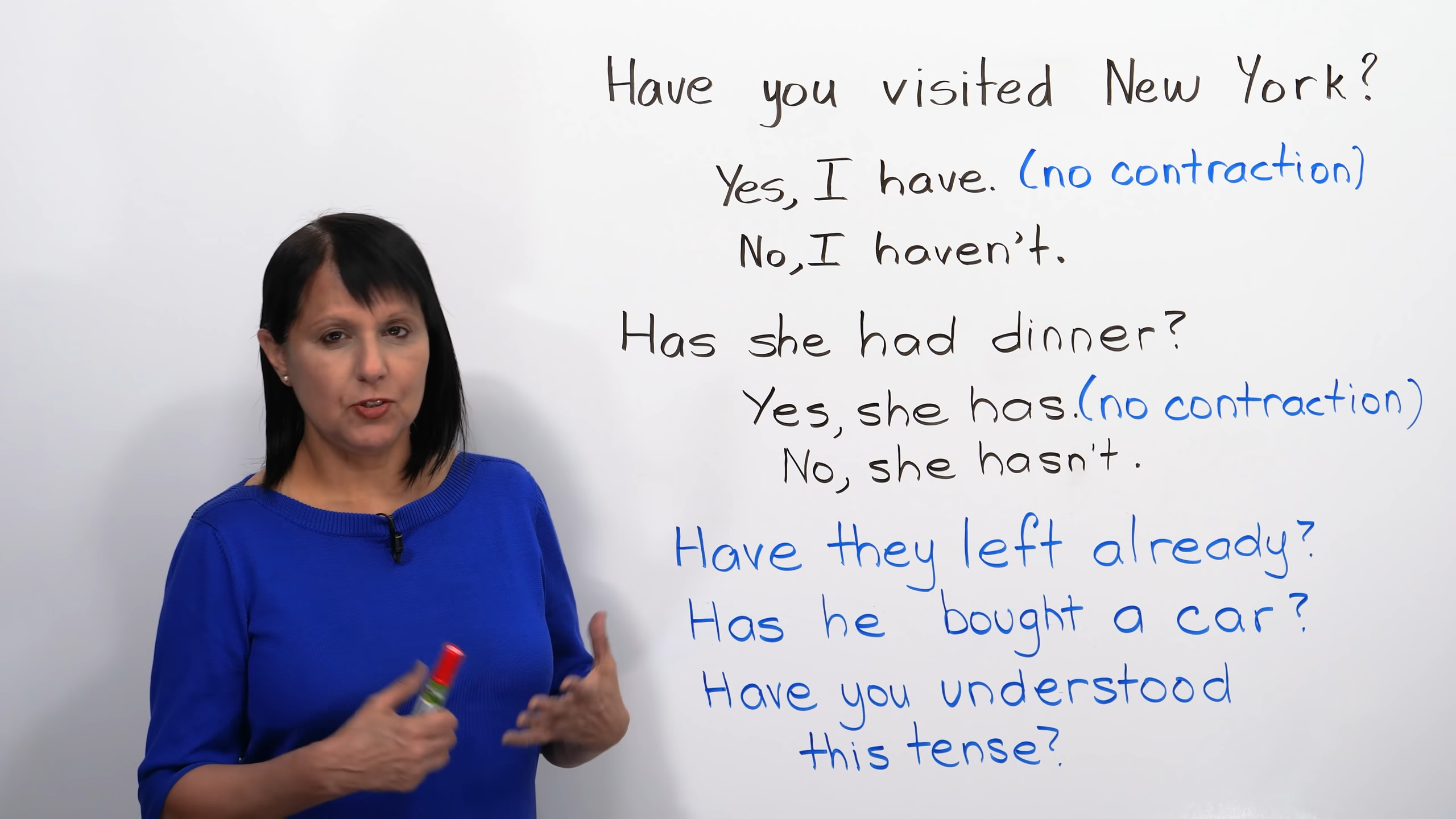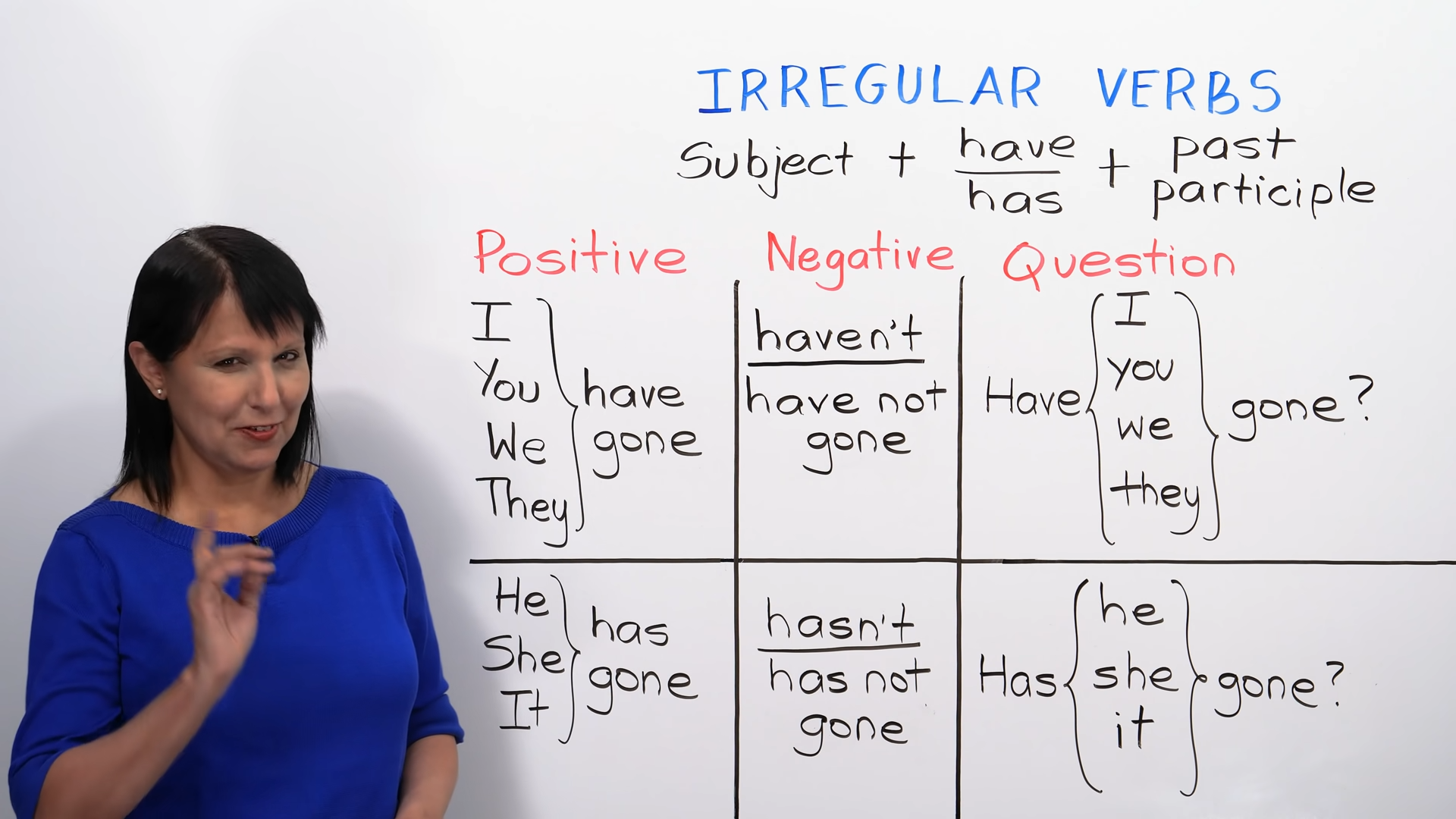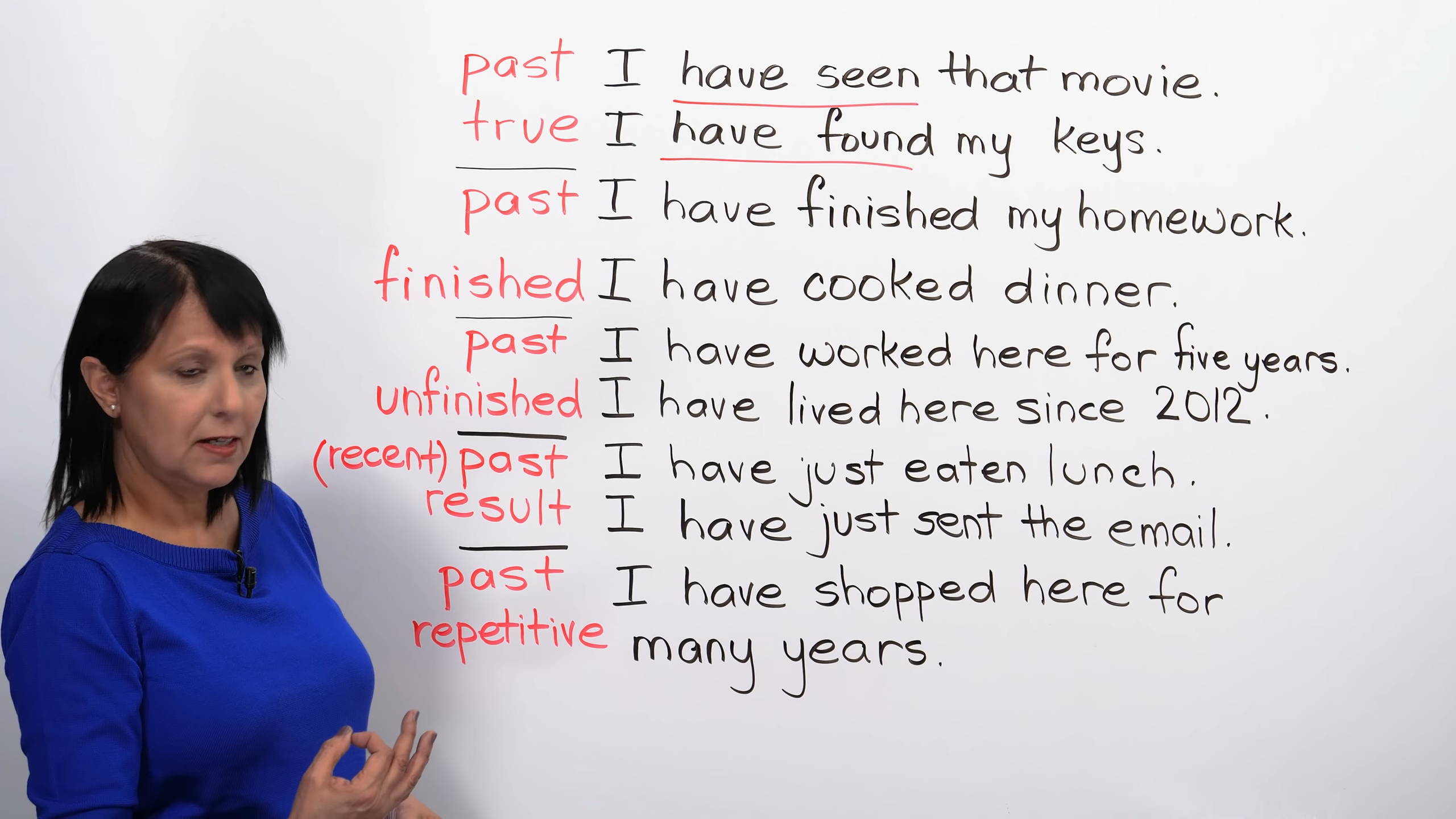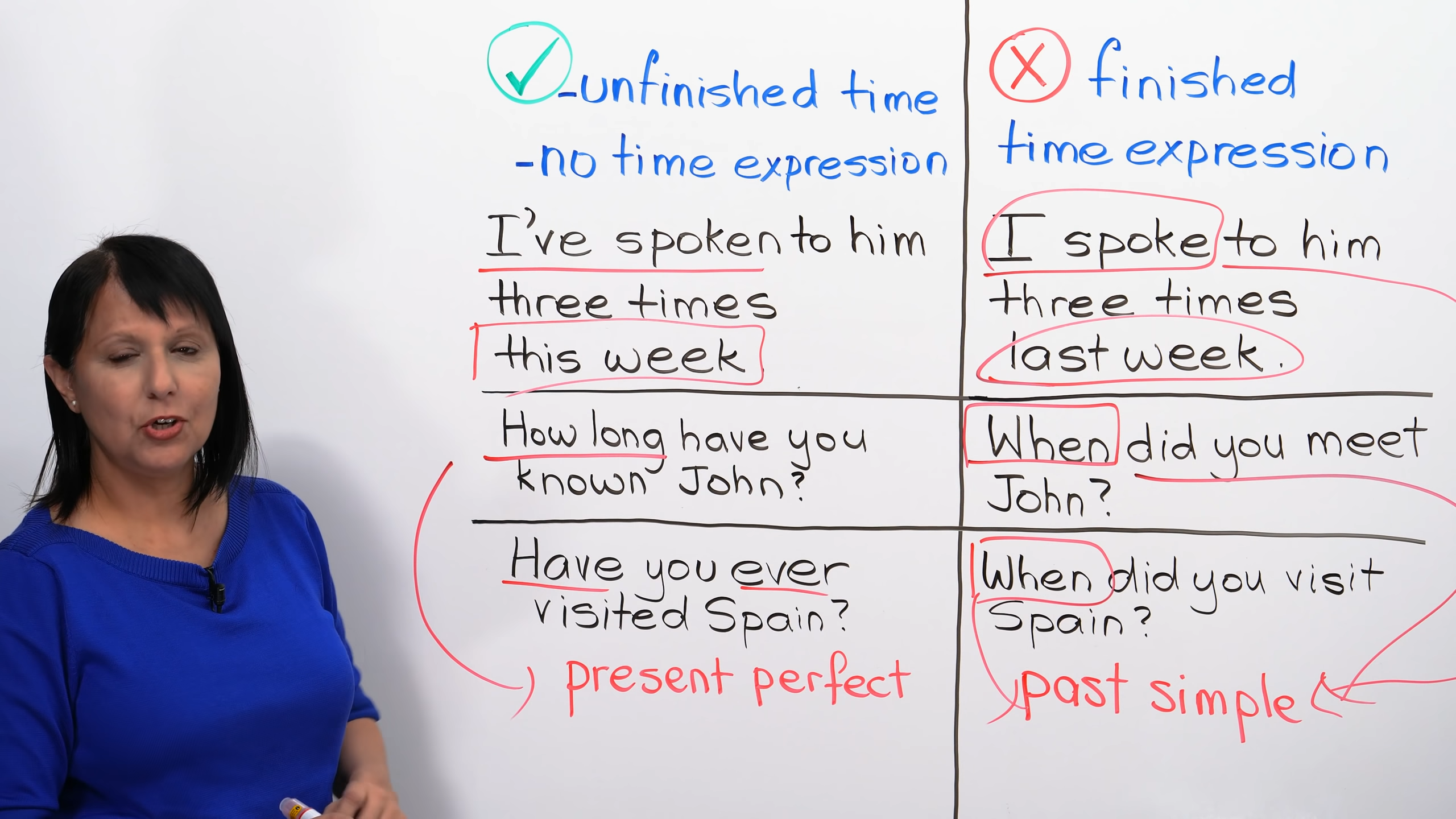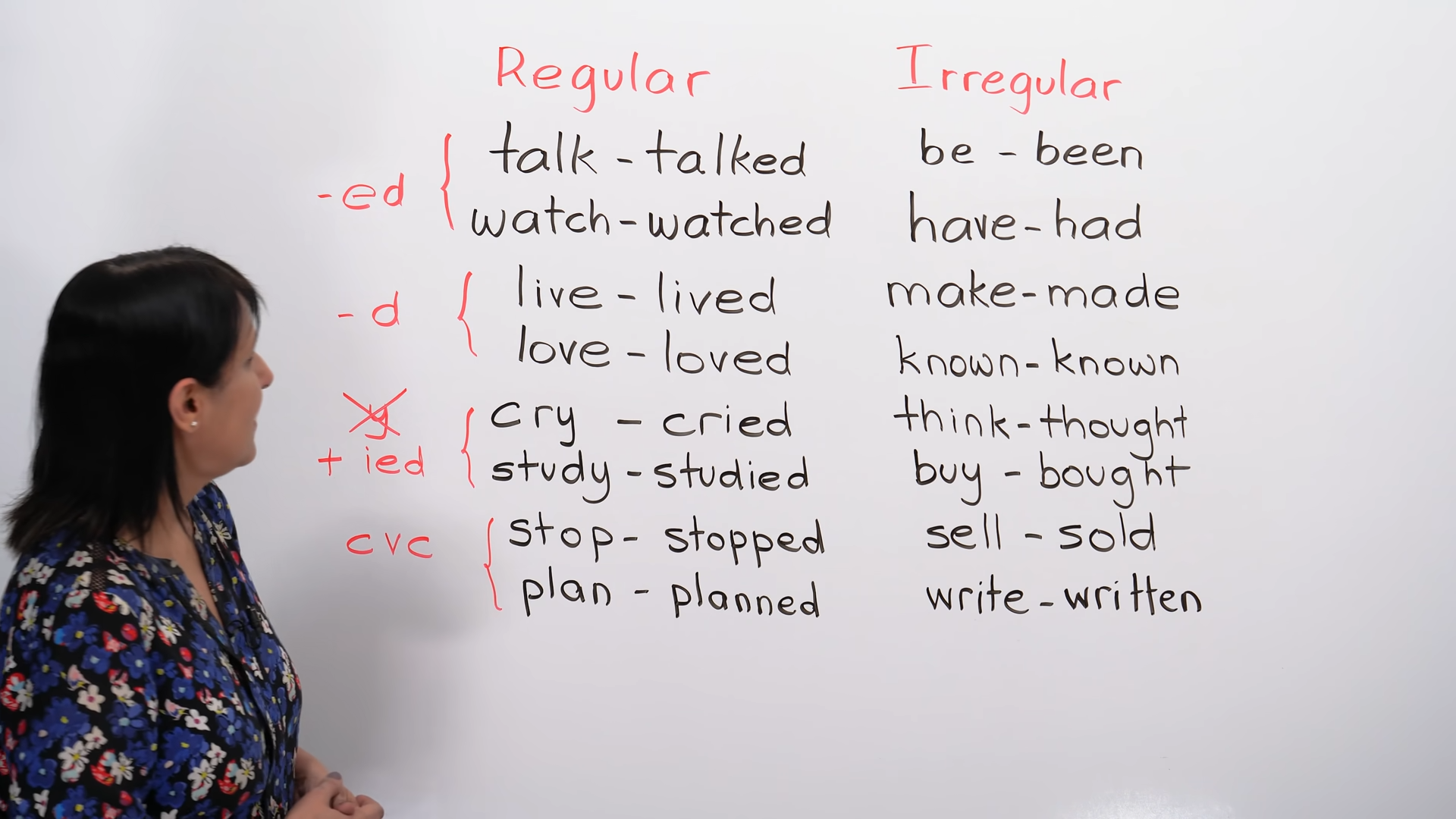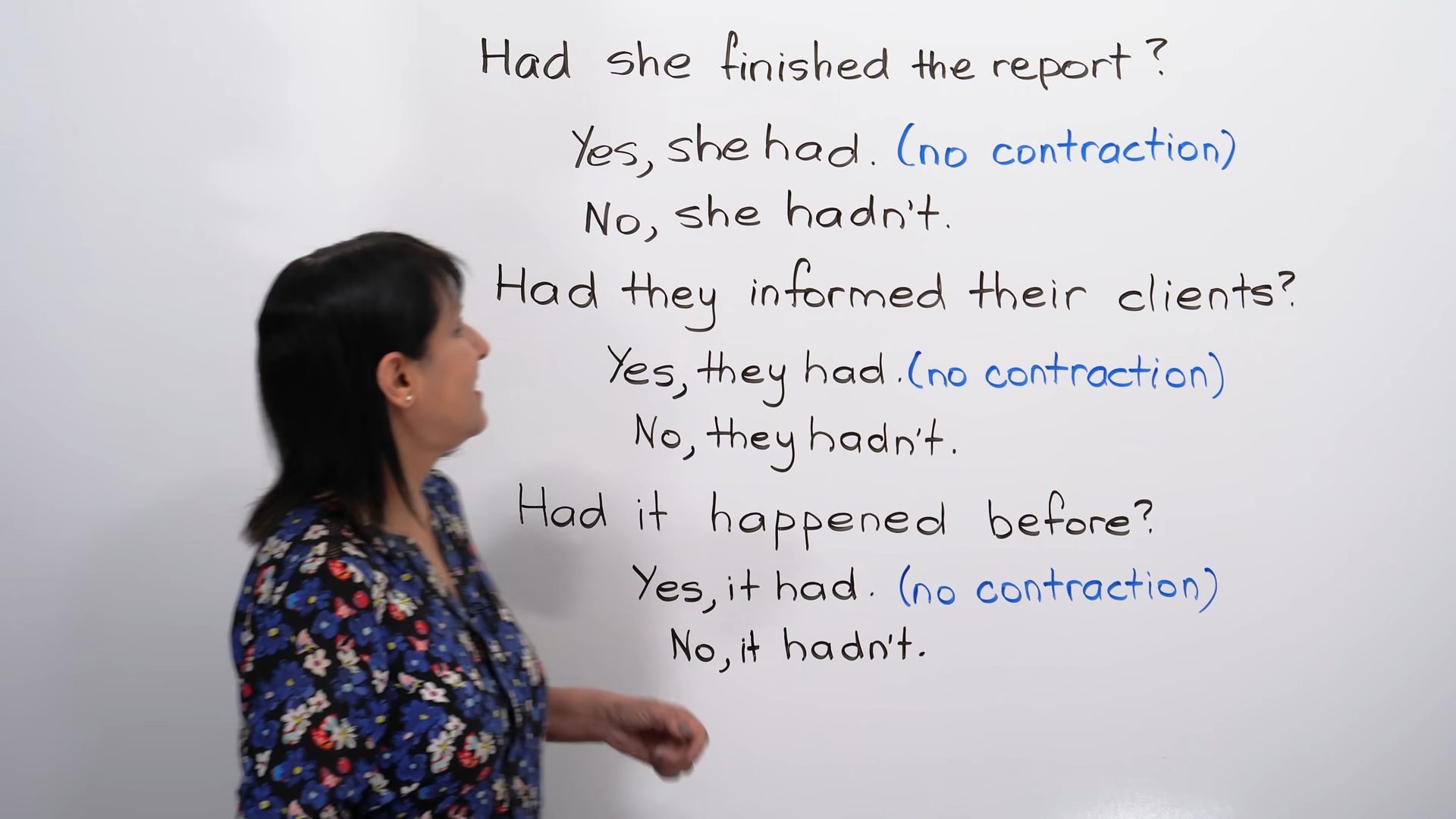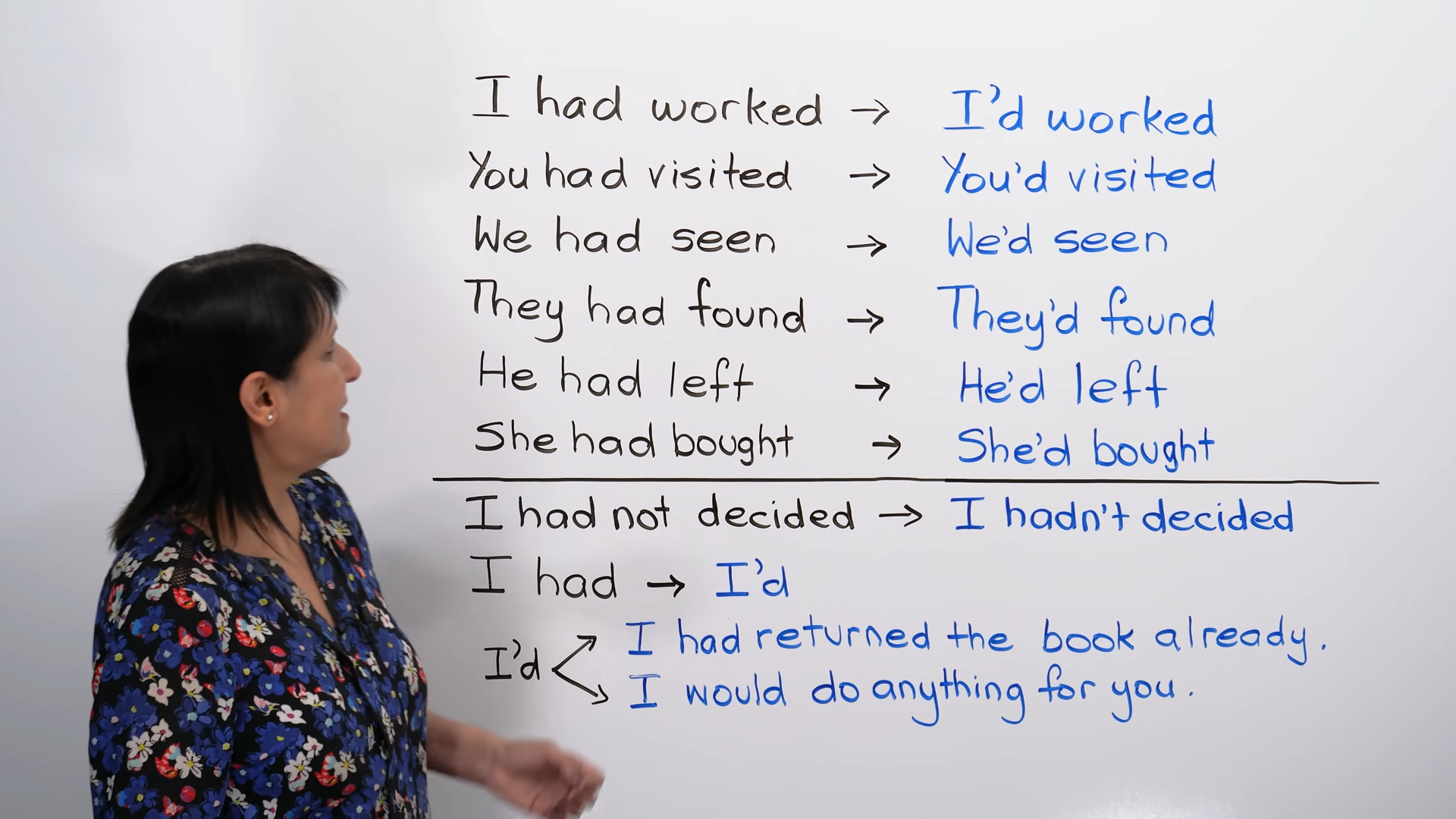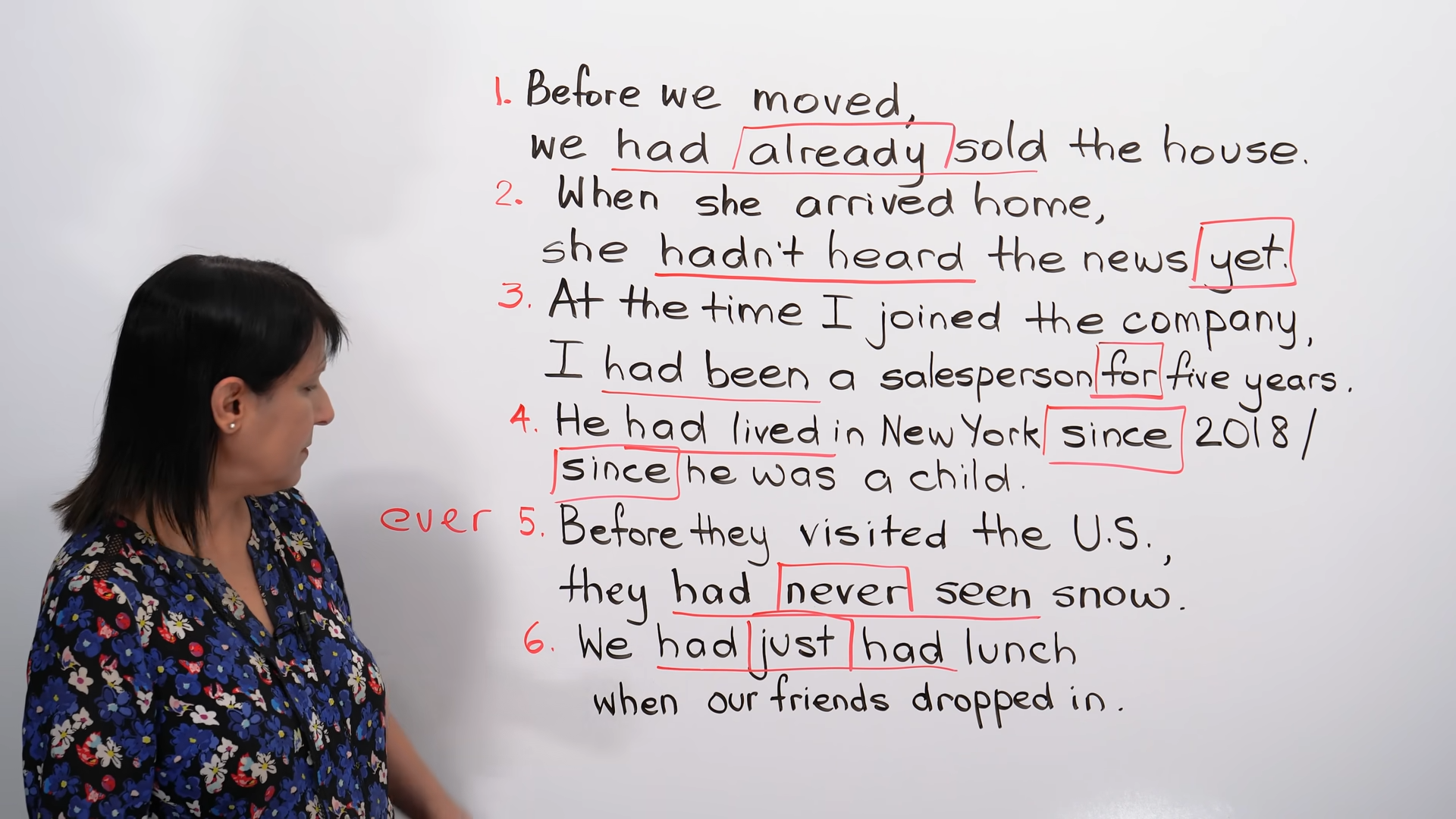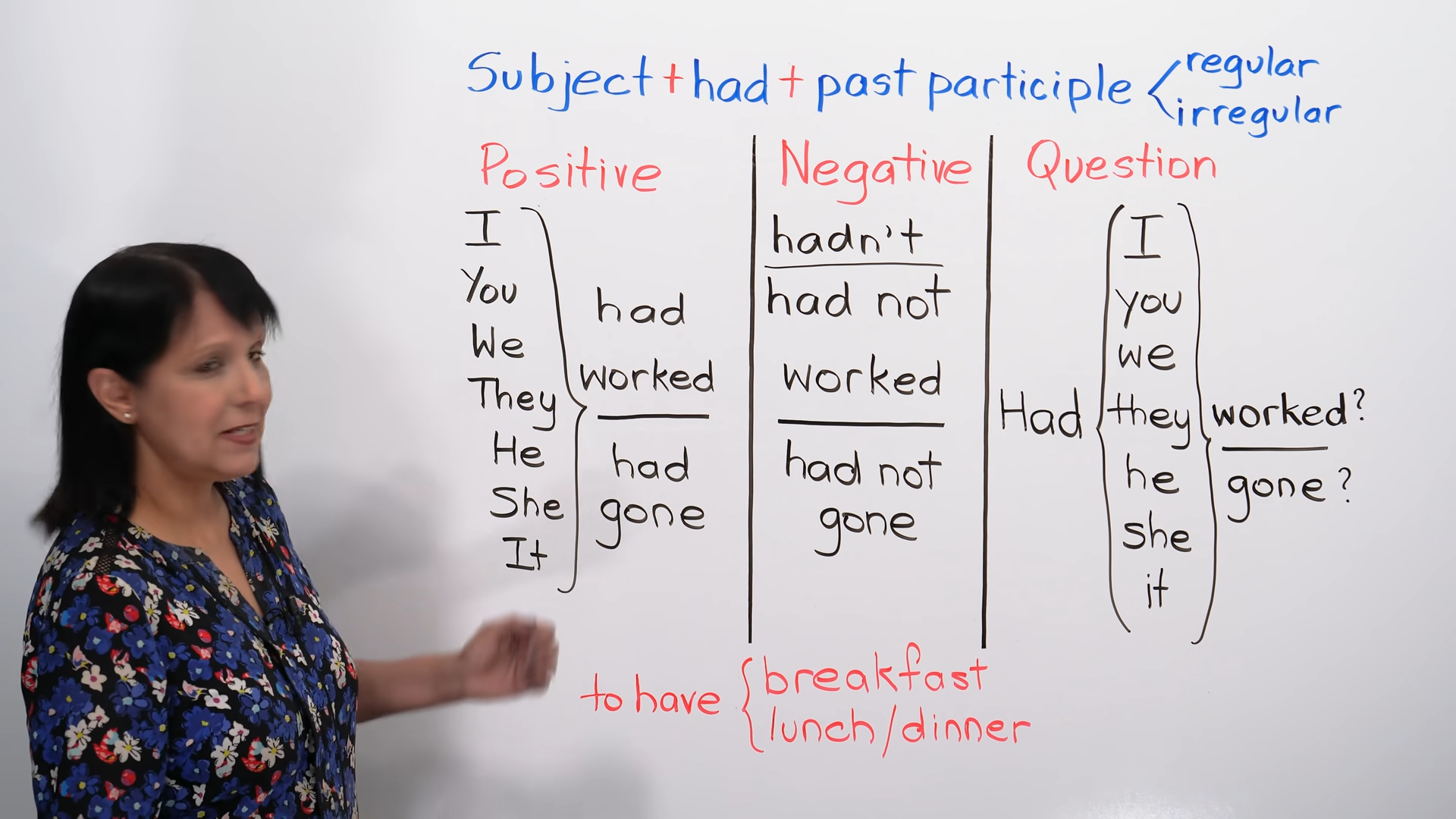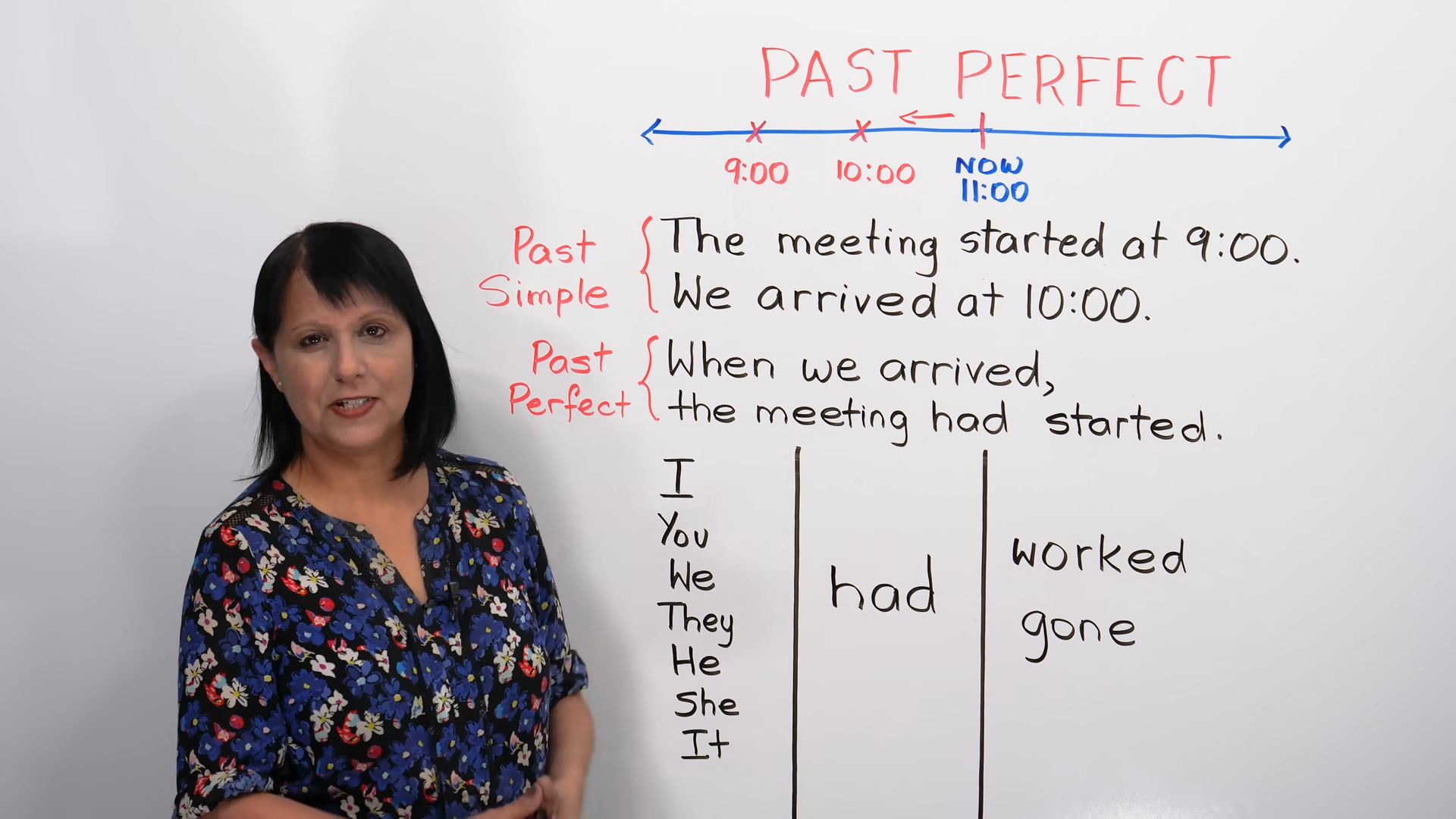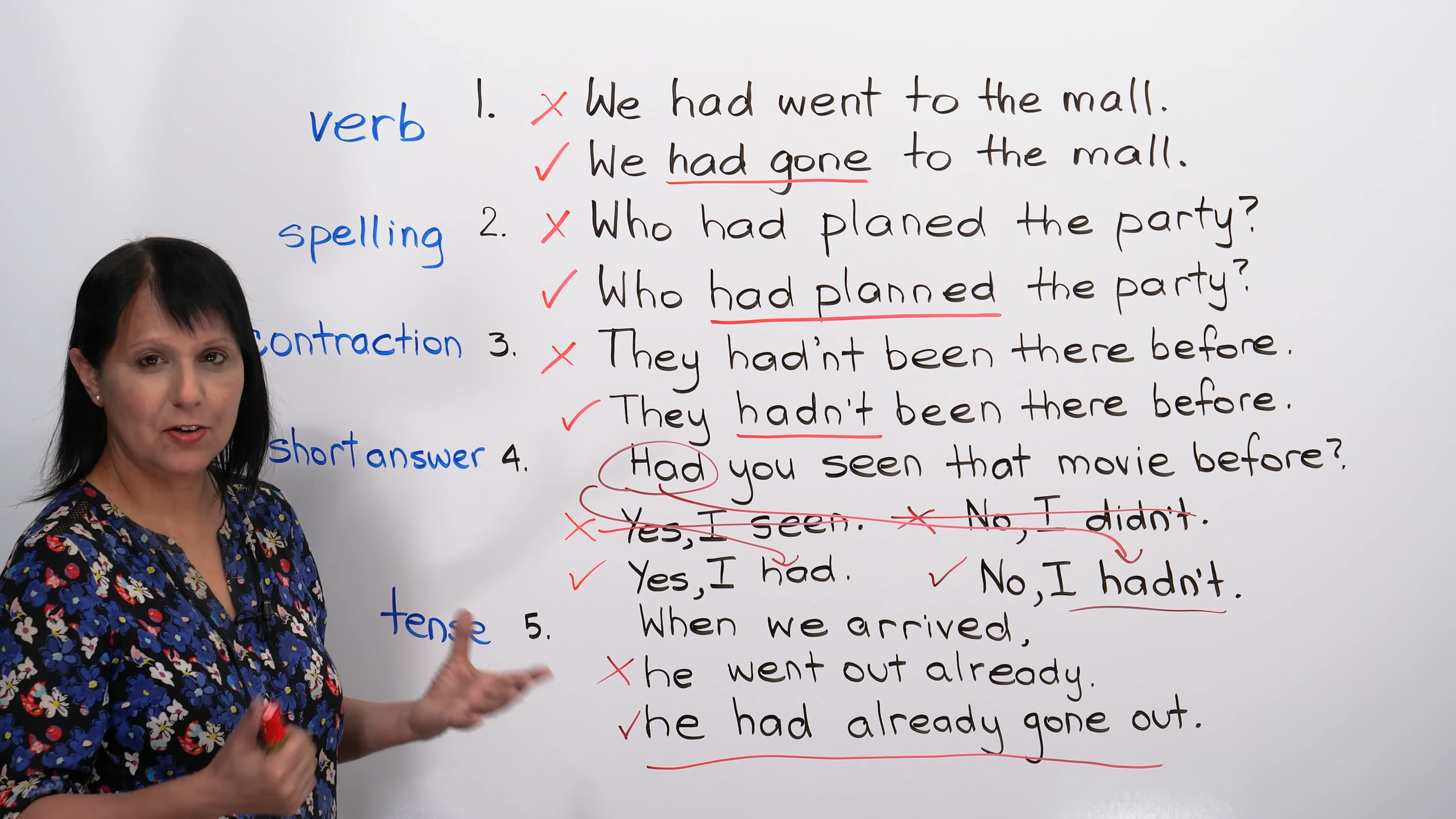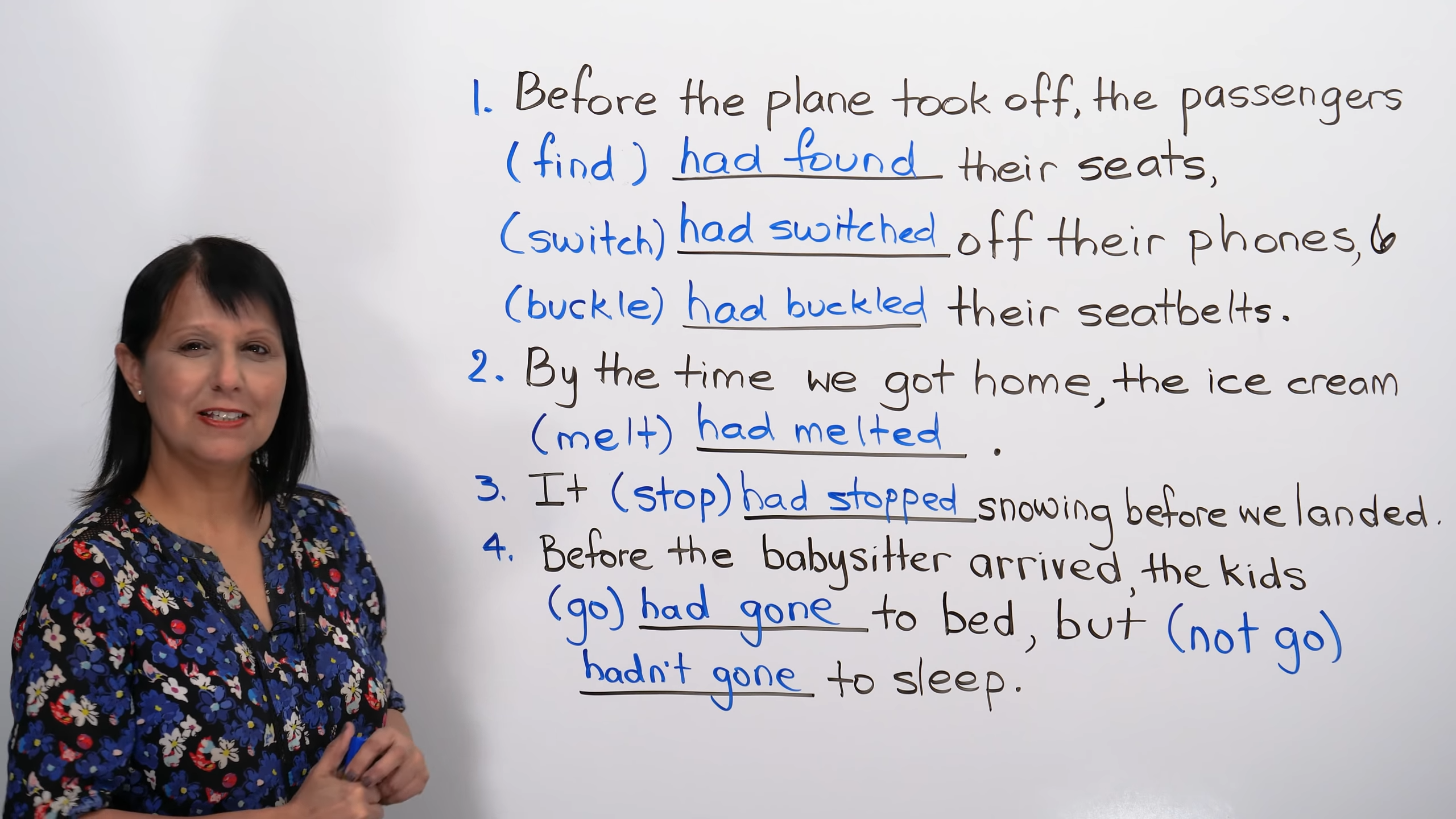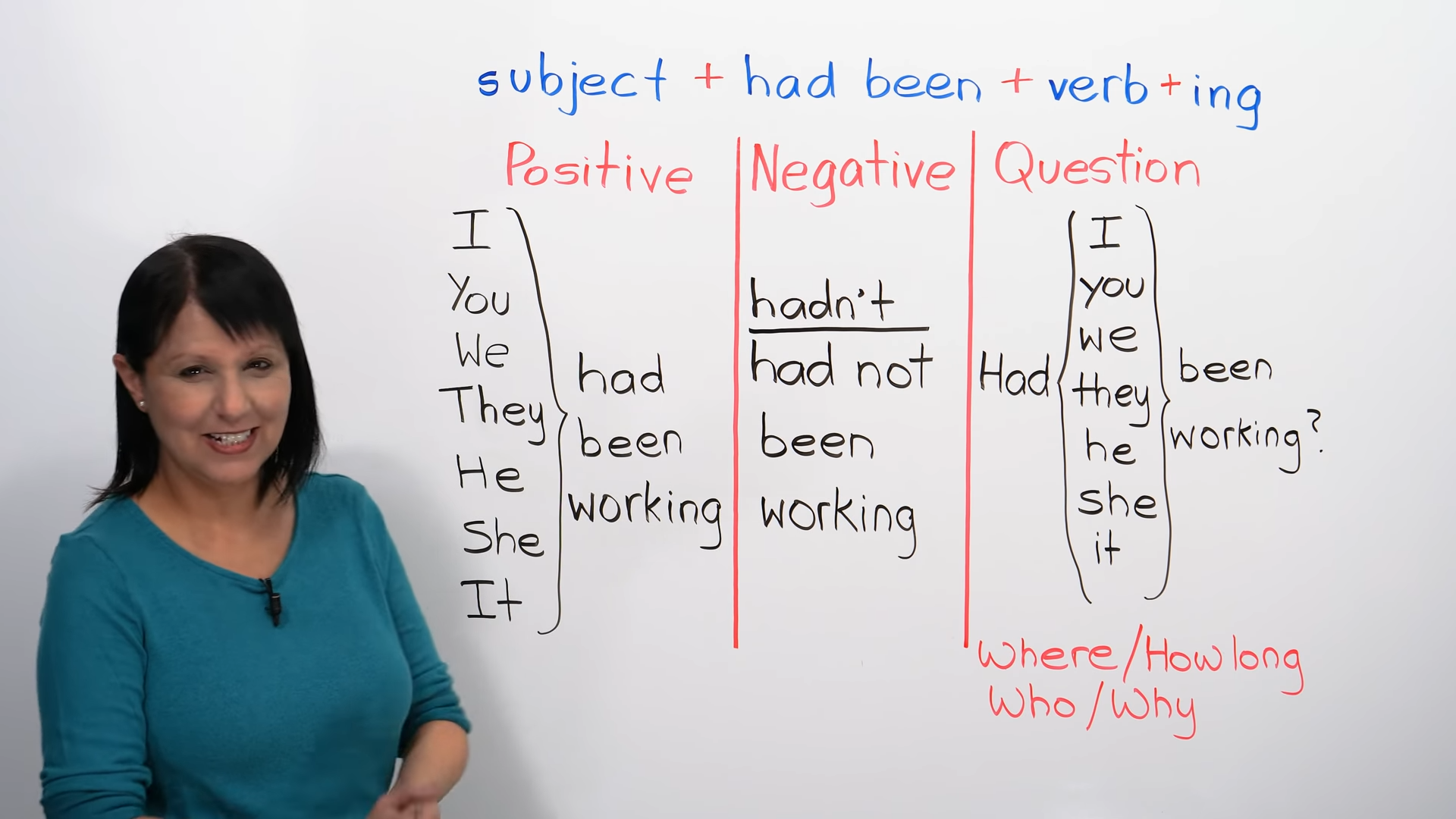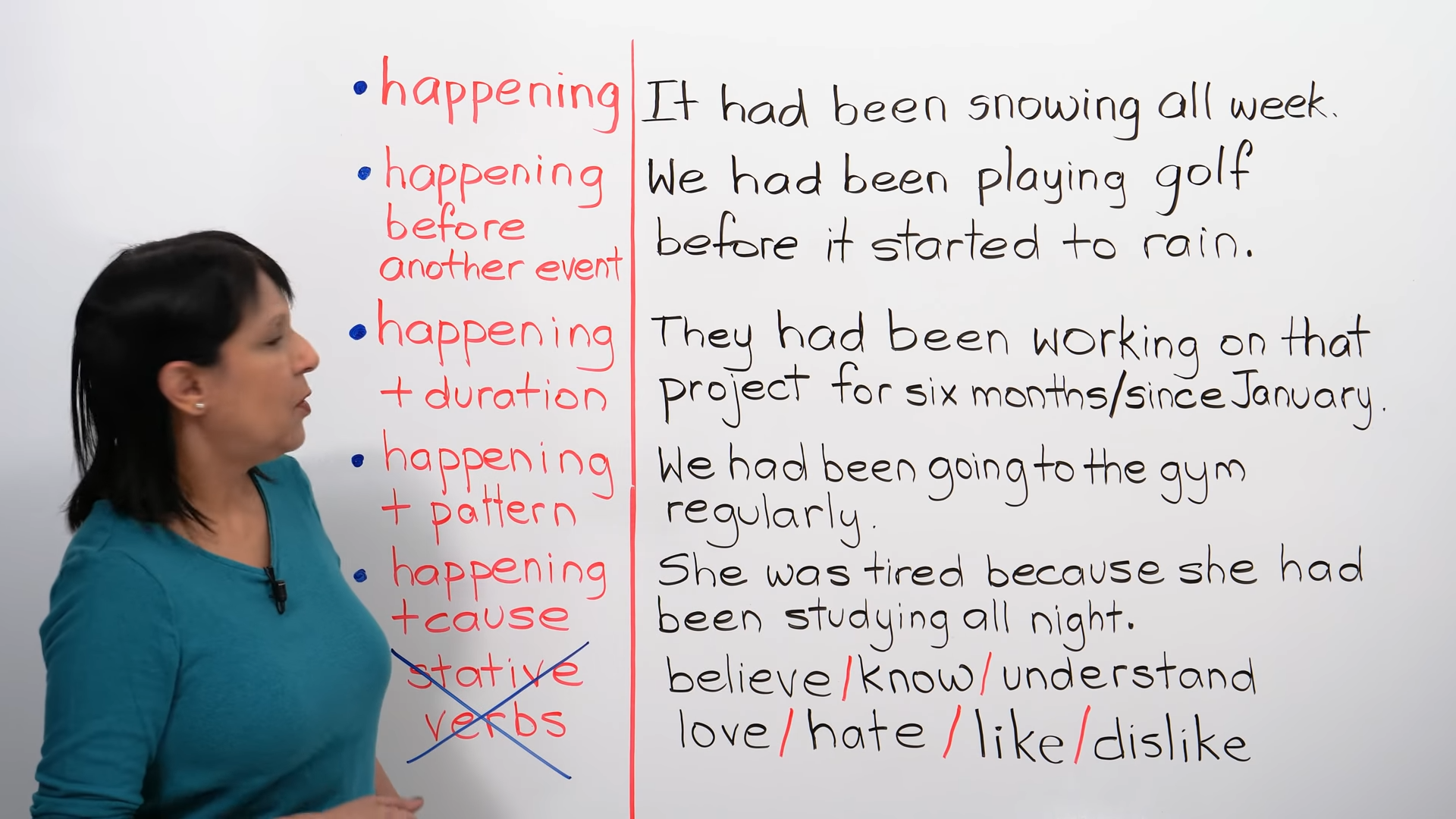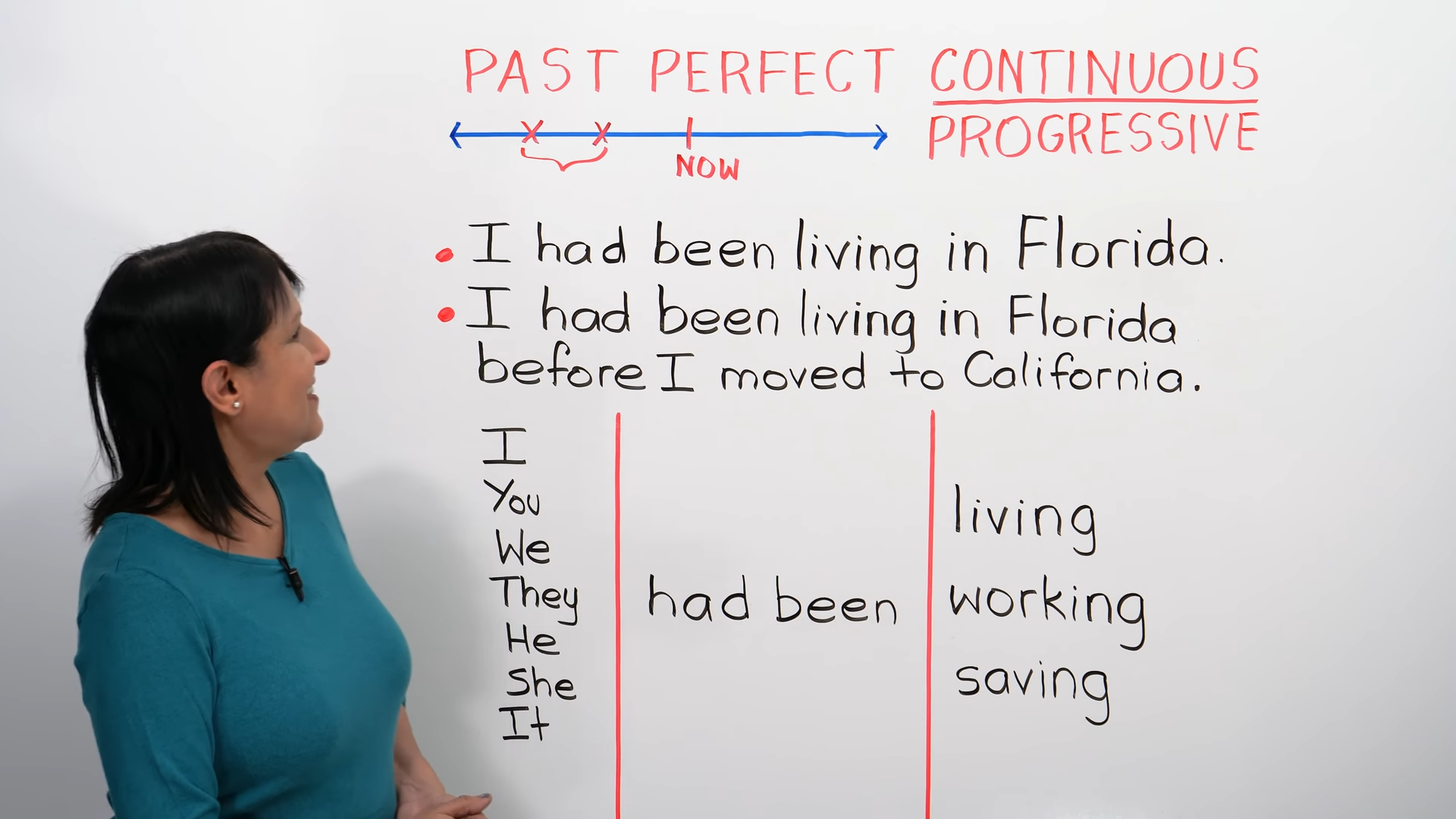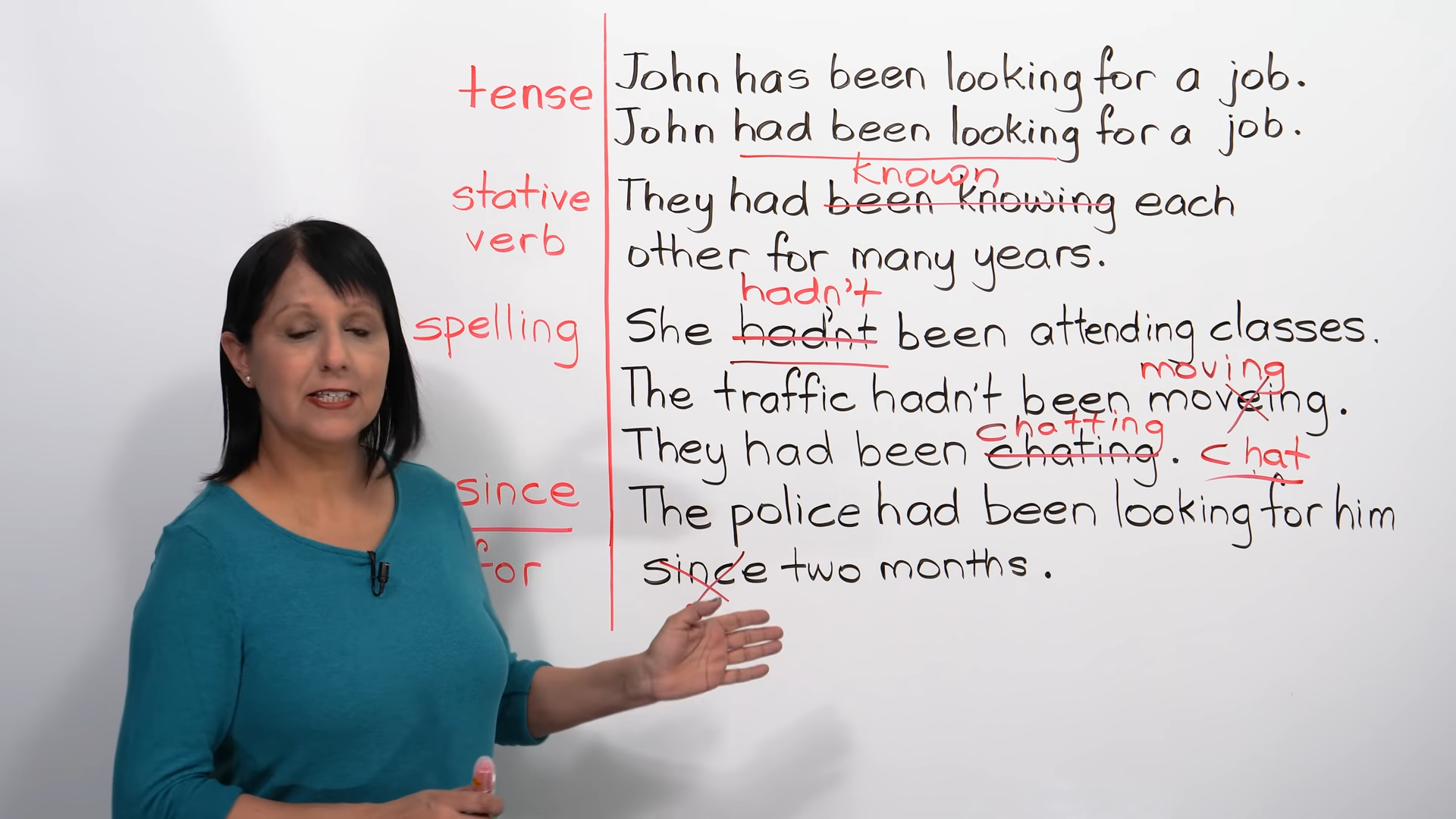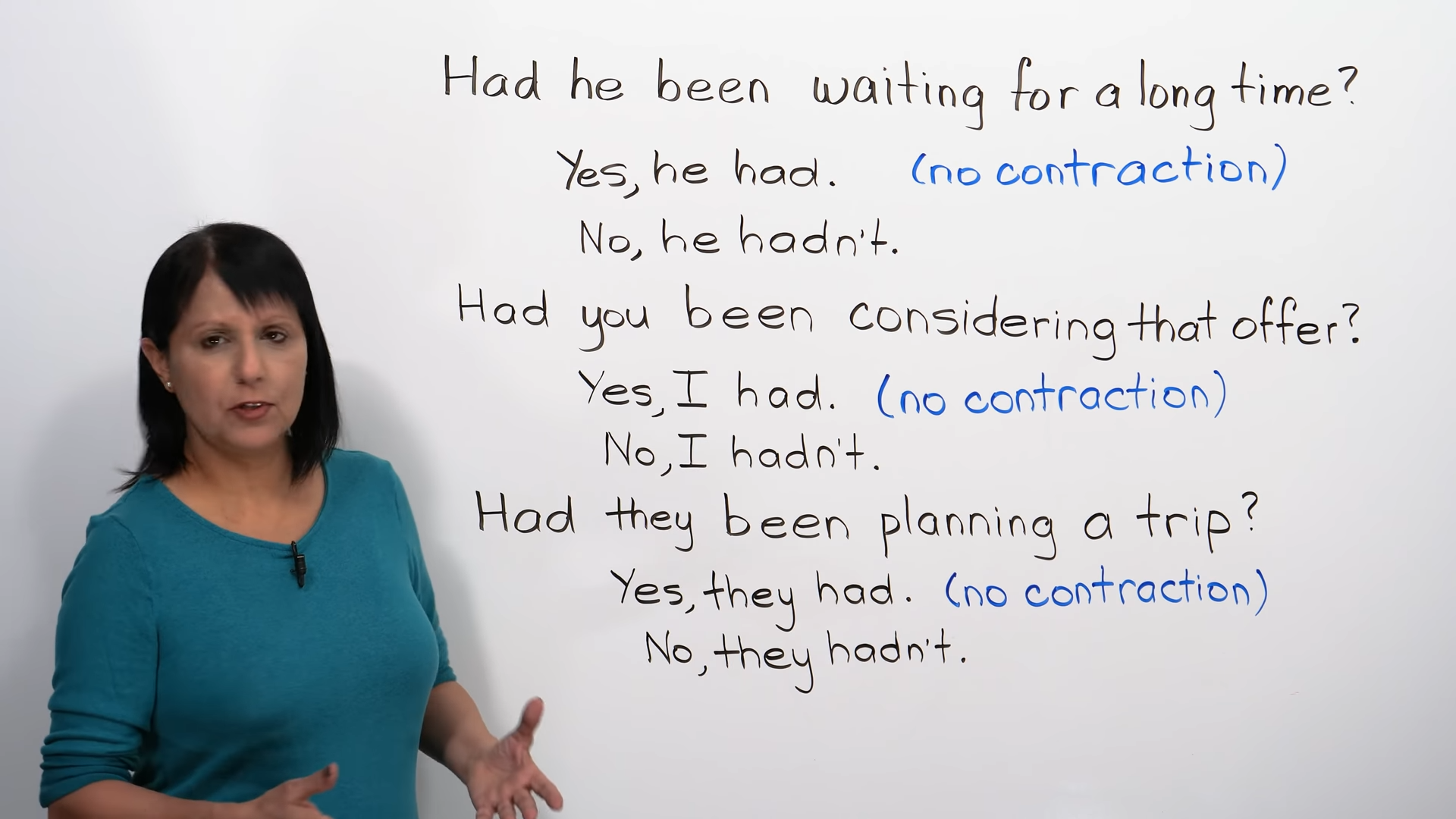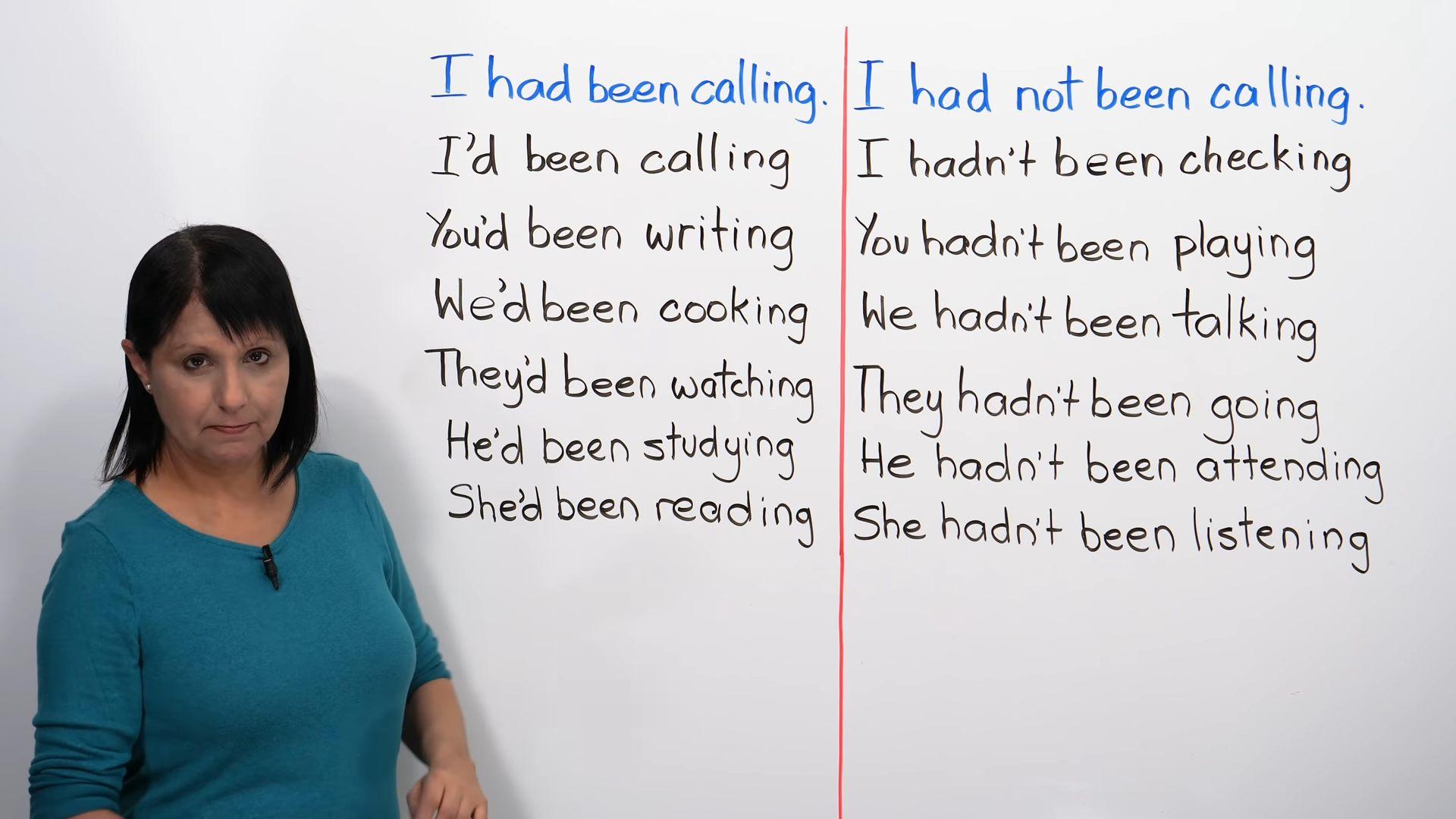This series is about English tenses. But what are tenses anyway? Tenses are simply the way we talk about time in English. What do we mean by time? We mean the past, the present, the future, right? These are all different times and we have different tenses to express or talk about those times.
PRESENT SIMPLE
Course Link: https://www.engvid.com/present-simple-tense/
Contrast
In the present simple, we would say "I work". And in the present continuous, we would say "I am working". So, what's the difference? What's the difference between these two sentences?


When we say "I am working", which is that other tense, present continuous(现在进行时), which we can learn later, that is talking about something that is happening now, or something temporary.
What do I mean by now? For example, I am teaching. You are listening, right? All these things are happening right now. So, when we are saying that, when I'm saying that, I'm using present continuous.
But when I say "I work", that is in general. For example, I may not be working at this moment, but I work somewhere. I have a job. So, when we talk about something that's true in general, that's present simple.
Five different situations
We have five different situations in which we can use this tense. Let's go through them one by one.
Permanent
First of all, we can use the present simple tense to talk about things that are permanent. Which are more or less always true, okay? For example: "We live in New York". So, let's suppose that this is where you live, right? Not just for a short time, but for a long time, and more or less, it's a permanent situation. It's always true for you. It doesn't mean it's completely true always, but most of the time, this is where you live. So, that's what we consider permanent. So, we could say "We live in New York", "He works at a bank", so when we say, "He works at a bank", it means that's his permanent regular job, okay? It's not a temporary job, it's not a job that he has just for a little while, that's where he works most of the time, okay? So, we use this for permanent situations.
Routines
So, let's look at another situation in which you can use the present simple tense. For routines. So, what's a routine? A routine is something you do regularly, okay? For example, "I wake up at 6:00 every day.", okay? "I go to sleep at 11:00". So, wake, go, these verbs are in the present simple tense because they're talking about a regular activity, a routine.
Facts
We can also use this tense to talk about facts. For example: "The sun rises in the east". It's just a fact, it's something that's a scientific truth. It's not something that I decided or you decided, it's just true. We could also say "The sun sets in the west",
Schedules
Next, we can use this tense to talk about schedules, because think about it, what is a schedule? A schedule tells us when something is going to happen, and that's kind of connected to this point, right? A regularly scheduled event. So, for example, we could say "Our class starts at 9:00." Why are we using the present simple? Because our class always starts at 9:00, alright? It's kind of permanent, it's kind of a routine, it's a schedule. Or, the flight leaves at noon. Not just this time, but the flight always leaves at noon. It has a schedule and therefore we're using the present simple tense with the words "starts" and "leaves".
Adverbs of frequency
Now, let's look at one other situation. There are some words in English, and they're called adverbs of frequency(表示频率的副词), to describe how often something is happening. And these words are shown down here, but let's look at this sentence first. "She always takes the bus". So, always is a word that tells us how often something happens, and all of these words down here are just like that. So, it always is like 100% of the time, we have other words. We have the word "never", which is 0%, it never happens. It doesn't happen at all. So, we could say he or she never takes the bus. We could also say, let's say, 50% of the time, okay, she takes the bus. So, we could say "She sometimes takes the bus". Or, once in a while, okay, "She rarely takes the bus". Or, "She often takes the bus". So, when you see one of these words, which are called adverbs of frequency, that also tells you that you should be using the present simple tense, along with these other situations.
Summary


Other notes
PRESENT CONTINUOUS (PROGRESSIVE)
Course Link: https://www.engvid.com/present-continuous-progressive-tense/
Contrast
Let's look at some examples in each of these tenses. So, in the present simple, I would say "I work". In the present continuous, I would say "I am working". So, what is the difference between these two? "I am working" talks about something that's happening right now. For example, I am teaching. You are watching. You are listening. Or, it can also talk about something temporary, like you're watching this lesson this moment, but also for a short time. Short is a general idea, okay? So, it could be something that's happening now, or something temporary.


Six situation use present continuous
Right now
Now, let's look at when we use the present continuous tense. So, as we saw earlier, we can definitely use it to talk about something that's happening right now. For example, "The baby is sleeping", don't make noise, okay? Or for example, "Oh, it's raining outside", alright? So those are examples of something happening right now.
Around now
We can also use this tense to talk about something that's happening around now. For example, "He is writing a book". So, he might not be writing it this minute, but he's writing it around now. We don't know how long it'll take, but it's happening around this time. So, we can use it in that context. For example, we could also say "He's working on a project". Maybe the project is going to take one week and maybe it'll take one year, or ten years, we don't know, but it's happening around now, okay?
Temporary
Next, we can also use it to talk about something temporary. Not something that happens all the time, but something temporary. For example, that book, right? We don't know, maybe it's going to take him three years to write the book, but in his mind, it's not something that's going to last forever. It's something temporary, okay? So, this is more about how you look at what is happening. Or, this example, something temporary, "We are staying at the hotel". We live in our home, that's permanent, but right now, while we're in this city, while we're traveling, we are staying at a hotel. That's something temporary. Okay?
Trend
Next, we can also use it to talk about a trend. For example, "The prices of homes are increasing". Let's say the prices were here, and now the prices are going up, so we can say the prices are increasing. Some sort of changes that are happening. And we can also talk about a trend in terms of something that's popular. Often, we talk about things - fashion trends, for example, right? People are wearing a certain color. People are wearing bright colors this summer, or people are wearing certain kinds of shoes. So, we can talk about trends using this present continuous tense, alright?
Advanced
So, those are the basic ways in which we use this tense, but I just want to let you know that there are also two slightly more advanced ways in which we can use this tense. So, let's look at what they are.
The first one is to talk about some kind of repeated action, but it's usually something negative. So, we're using it to kind of - when we want to complain about something. For example, if you say, "They're always making noise", that's a negative remark, right? So, we can use "always" in this context with the present continuous tense. Usually, we use words like always, never, sometimes, frequently, and so on, to talk about the present simple. Something that's true in general. For example, "They always help us", or just to talk about facts. But when you're talking about something negative, then very often we can use this present continuous tense, but that's a slightly more advanced way to use it, so don't worry about it too much, but you might hear people using it that way.
And, another point, I know that I said this is called the present continuous, and it talks about the present, not the past, not the future, the present, however, sometimes we can actually use it to talk about the future, but only in a special way. So, let's look at what that is. If I say, "She's flying to Mexico next week.", now, if I didn't say "next week", if I only said, "She's flying to Mexico", what does it mean? It's happening right now. So, when I want to use this tense to talk about the future, I have to say something like this. I have to say next week, tomorrow, next summer, next year, I have to give it some kind of time in the future and then you can use present continuous for the future in a slightly more advanced way, okay? So, those are the basic ways in which we use this tense.


Two situation don't use present continuous
Now, let's look at when not to use the present continuous tense.
Permanent actions
So, first of all, everything here, all these examples, these are all wrong, okay? And we're going to understand why. So, we cannot use the present continuous tense to talk about any permanent actions or activities.
For example, for most people, where they live, where they work, these are more or less permanent. They don't change every day. They're not temporary, right? So, if I live in Canada all the time, then it would be wrong to say, "I am living in Canada". That would only be okay if it was something temporary. Similarly, if I work at ABC company, and that's my permanent job, it would be wrong to say, "I am working at ABC Company". I would need to say, "I work at ABC Company". That would be a difference tense, the present simple tense. And similarly here, if I live in Canada, I need to say "I live in Canada" and not "I am living", because that would be temporary. So, that's the most common kind of mistake that people make, so be really careful of that.
Stative verbs
Similarly, we have stative verbs (静态动词). This is another area that you have to be really careful about. Why? Because in English, there are two kinds of verbs: action verbs and what are called stative verbs. So, action verbs are your normal verbs that you know most of the time like work, run, play, jump, okay? And stative verbs describe a state or a condition. It could be a mental state. It could be an emotional state, okay? And with this tense, we cannot use stative verbs, and in fact, in any continuous tense in English, you cannot use stative verbs. Let me give you some examples of stative verbs. For example, it would be wrong to say, "I am understanding English". No. You cannot say that, because "understand" is a stative verb, to do with your mind, so it's wrong to say that, okay? This is all wrong, okay. It would be wrong to say, "We are liking this show". Liking is wrong because "like" is a stative verb. So, we would need to say, "We like this show". "I understand English", okay? Similarly, here, when you talk about verbs that refer to what you own, what you possess, what you have, we cannot use those verbs in the stative form with this tense. So, it would be wrong to say, "They are having a car". You would need to say, "They have a car". Similarly, again, there's a long list of stative verbs, but the verb "need" and the verb "want" are very common verbs which are usually stative verbs and therefore you can't use them in this tense. So, it would be wrong to say, "Are you needing help?". You would need to say, "Do you need help?", okay? So, whether you have learned the present simple or not, don't worry right now, just understand that with the present continuous, you cannot use stative verbs, so everything here is wrong.






shorten subject + "be"
Usually, it's faster, it's easier, and we use it a lot in informal conversation and also in informal writing. We do not usually use contractions like these informal business writing or in academic writing, but we use them a lot on an everyday basis.
Spelling changes
Now, let's look at some spelling changes we need to make to the verb when we're using the present continuous tense. So, with all
of the verbs, you need to add "-ing".
Most verbs
And to most of the verbs, that's all you need to do. You just need to add "ing".
Ending in E
For verbs ending in E, we need to drop the E and then add "ing".
Ending in "ie"
For verbs ending in "ie", we need to drop the ie and add y and then add the ing.
Ending in a C-V-C pattern
Now, for some verbs, ending in a C-V-C pattern, we have to double the last letter. What does that C-V-C? C stands for a consonant, V for
the vowel, and C again for the consonant. A vowel in English is A, E, I, O, or U and a consonant is any other letter. So, what you do is look at the verb, alright, you look at the verb from the end, it will be easier, and if it follows that pattern, right, C, a p is a consonant, an a is a vowel, and then the l is a consonant, so if it follows that pattern, C-V-C, then double that last letter. Now, there are some special circumstances, it doesn't always apply, but it often applies. There are patterns in English spelling and sometimes there are exceptions.
Class Notes
What's the difference between present simple and present continuous
Notice: Are you working here? and Do you work here?
PAST SIMPLE
When we talk about the past simple tense, we're talking about a time that is before now or in the past.
But past simple specifically talks about something that happened in the past and it's finished and it's over.
Spelling changes


Base form
We already talked about the basic one, which is that you take the verb, the base form of the verb, and you add "-ed".
We just needed to add "-ed", and that works for lots of the regular verbs.
Ending with "e"
Sometimes, the verb itself, the base form of the verb ends with an "e" already, then you don't need to add another "e", you just add "d", so bake and baked. We just added the "d" there.
Ending with consonant + "y"
Next, if you have a verb that ends with a "y" and has a consonant before it, okay, consonant means anything that's not a vowel. A vowel is A, E, I, O, U and a consonant is anything else but that vowel.
So, if you have a word that ends with "y" and has a consonant before it, then what you do is you cancel the "y", right, cancel the "y" and add "-ied".
Ending with C-V-C
And then we have one other pattern that you might see very often, and that is when we double the last letter and then add "-ed". If you look at the base form of the verb, from the end, okay, and you see that there is a consonant and a vowel and a consonant, alright, from the end, then we usually double the last letter. So, we doubled the last letter plus we added the "-ed".
So, these are some of the basic ways in which you need to make spelling changes in the past simple tense, but the best way for you to
learn it is with these rules but also by just observing and paying attention every time you're reading English. Pay attention to the spelling so that you can master it.
pronunciation
I know it's a little bit hard, like how are you going to remember like voiced, unvoiced, vibration, no vibration, movement, no movement?
So, it is technical. If you're very interested in the pronunciation and you want to understand it perfectly, then please study that in detail and you will be able to master it, okay?
But otherwise, what you can do for these two columns is to listen carefully and for all words, listen very carefully to good English teachers, good English speakers, and pay attention to these words, okay?
Practice
PAST CONTINUOUS
Course Link: https://www.engvid.com/past-continuous/
Contrast
When we want to talk about the past in English, there are two basic tenses: the past simple and the past continuous. An example of the past simple is "I worked". An example of past continuous is "I was working".
So, let's understand the difference. When we use the past simple, we are referring to something that happened at a specific point in time, okay? It happened at a specific point in time in the past.
When we use past continuous, we're talking about something that continued during a period in the past.
Here, we're just talking about the one action, here, we're talking about the action that continued, how long it continued, and we want to emphasize that, okay?
Let's look at an example here with our timeline.
This is now, and it's 8:00pm. And let's say that in the past, before this, you were working. So, let's say you started work - let's say, you could say "I started work at 9:00am." Started - I started, past simple. "I finished work at 5:00pm.", again, past simple, because these are points, right?
But, if you want to talk about this period from 9:00am to 5:00pm, and you want to emphasize that it went on for some time, then you would say "I was working from 9:00am to 5:00pm.", and this "I was working" is the past continuous.
What do we use past continuous
So, we would use the subject + the past tense of the verb "to be" as the helping verb, then a verb + -ing. For example, we would say: I was working.
A period of time
We can use it to talk about an action that was continuing during a period of time. For example:
Sarah was studying all day.
A particular moment in the past
Next, we can also use this tense to talk about an action that was continuing during a particular moment in the past. For example:
At 11:00pm, I was sleeping.
An action was continuing when it was interrupted
Next, we can also use it to talk about an action that was continuing when it was interrupted by another action. For example:
They were having dinner when we arrived.
Now, this is an interesting sentence because it actually has two past tenses. It has the past continuous: were having, right? This was continuing, they were having dinner, having and having and having dinner when we arrived. So, this part here is that past simple.
So, this action was continuing and then something happened in the middle, but when you want to show that that something happened, you want to show what was going on at that time, we use our past continuous.
Advanced ways
So, we can also use it sometimes to talk about an action that was planned. For example:
I was planning to call John.
You could also use this tense sometimes for a polite request with a particular expression that we use in English to make a polite request, and that expression is this one:
I was wondering if you could help me.
When we say, "I was wondering", that is past continuous, alright, here, but it's just an expression that we use and it means, really, you know, "Can you help me? Could you help me?", but it's a very polite way of saying "I was wondering if you could help me." That means I was thinking about this, if you could help me, alright?


When not to use
Now, let's look at when not to use the past continuous tense. So, in English, we have two kinds of verbs: action verbs and stative verbs. Action verbs are verbs like work, study, run, cook, clean. And stative verbs describe some kind of state or condition. It could be a mental state, an emotional state, or something else.
Let's look at some examples.
There is one verb which is very interesting and very common which you should be aware of, and that's the verb "to have". Now, "to have", sometimes has a stative meaning and sometimes it has a more dynamic meaning or action meaning. So, when it has a stative meeting, we cannot use it in this tense or in any continuous tense, but when it has the other meaning, then we can.


Others
FUTURE SIMPLE
Course Link: https://www.engvid.com/future-simple/
When we use the word "will", we are, in fact, using the future simple tense. We're talking about anything that happens after now.
For example, it could be something that happens five minutes now from now or 50 years from now. All of that is the future.
Usage
Three basic ways are by using the phrase "going to", by using the present continuous for the future, or by using "will", which is what our class today is going to be focusing on.
Formal situation
If you're talking about some formal situation, something more official and formal in business, in academics, or even in a social situation with someone you don't know very well, for example, if it's formal, it's very easy.
Then, all you do is you use "will" to talk about the future.
Informal situation
If it's formal, we're going to use "will", but if it's an informal situation, maybe it's more casual, it's more friendly, it's with people that you know, then you have to consider two points: is the thing you're talking about, the action, is it something that is planned in advance? Or is it something unplanned and happening at the moment of speaking?
Let me explain.
So, if it's planned, then we would use this phrase "going to", or we would use present continuous.
For example:
I'm going to meet John tomorrow.
Because you have a plan to do that. You may have an appointment to do that. Or you could say "I'm meeting John tomorrow.". Same thing.
It's planned in advance, but if it's unplanned, that means what? What do we mean by unplanned?
Let's suppose you're at a meeting and someone says "Hey, could you meet John tomorrow?", and you say "Okay, I'll meet John tomorrow.".
So, you just decided at the moment of speaking, and it's an informal situation because you know John. So then, we can use "will" and of course, as we already said, if it's a formal situation, then we use "will".
Class Notes
FUTURE with “GOING TO” & Present Continuous
Course Link: https://www.engvid.com/future-going-to-present-continuous/
FUTURE – “will” or “going to”?
Course Link: https://www.engvid.com/will-or-going-to/
FUTURE CONTINUOUS
Course Link: https://www.engvid.com/future-continuous/
It's about something that happens in the future, something that happens after now, that continues for some time.
It's something that's happening, it's not just something that happens, but it's happening. It continues. It continues for some time. It's in progress.
Example:
I will start work at 9:00, and I will finish work at 5:00. I will be working from 9:00 to 5:00.
Stative verbs can be talking about emotional states, mental states, something that you own or possess, or all kinds of other things.
You cannot use the future continuous with stative words.
PRESENT PERFECT
The present perfect tense connects the present with the past. It's not just about the present or the past, it links and connects the present and the past.
This tense shows us that an action in the past has a result in the present. That means that something that happened before now has an effect or a result on something now.
So, there's that connection between past and present in the present perfect tense.
PAST PERFECT
Course Link: https://www.engvid.com/past-perfect/
What it did is it allows us to show or talk about two or more things that happened in the past and we want to show which of those things happened first in the past.
So, whatever happened first, we express in the past perfect tense. The other part of the sentence, if you have it, can be just in the past simple tense. But when we want to show what happened first, we use the past perfect tense.
FUTURE PERFECT
Course Link: https://www.engvid.com/future-perfect/
FUTURE PERFECT is the action that will be completed before a specific time in the future, or before another action in the future. So we can use the future perfect tense in two ways.
Regular verbs:
If the verb already ends with an e, then we don't need to add -ed, we just add -d.
If you have a word that ends, a verb, actually that ends with a -y, and before the -y you have a consonant(辅音), which means any other which is not a vowel, a vowel is A, E, I, O, U. But if you have a -y, and before the -y you. I have a consonant like here: try, right? It ends with y, and before it is a consonant, then what we do is we cancel the -y and add -ied. So, try becomes tried. The study becomes studied.
And the last pattern that we can kind of see, or one of the main patterns, is for verbs that end with what's called a c-v-c pattern. So, "c" stands for consonant and "v" stands for vowel. So, we look at the verb from the end. Let's look at this one, starts with a c at the end, then we have a vowel, and then another c for a consonant, right? C-v-c. So, when you see a verb like that, when we look at it from the end and it has this pattern, then you double the last letter. So, the ship becomes shipped. They will have shipped your order, right?
Irregular verbs:
By this time next year, she will have become a doctor. (become - became - become)
PRESENT PERFECT CONTINUOUS
Course Link: https://www.engvid.com/present-perfect-continuous/
It connects or links both the present and the past. It doesn't talk only about the present or only about the past, it connects them.
So, it talks about an action that started in the past and it's still continuing now. Something that started in the past and it's still going on now.
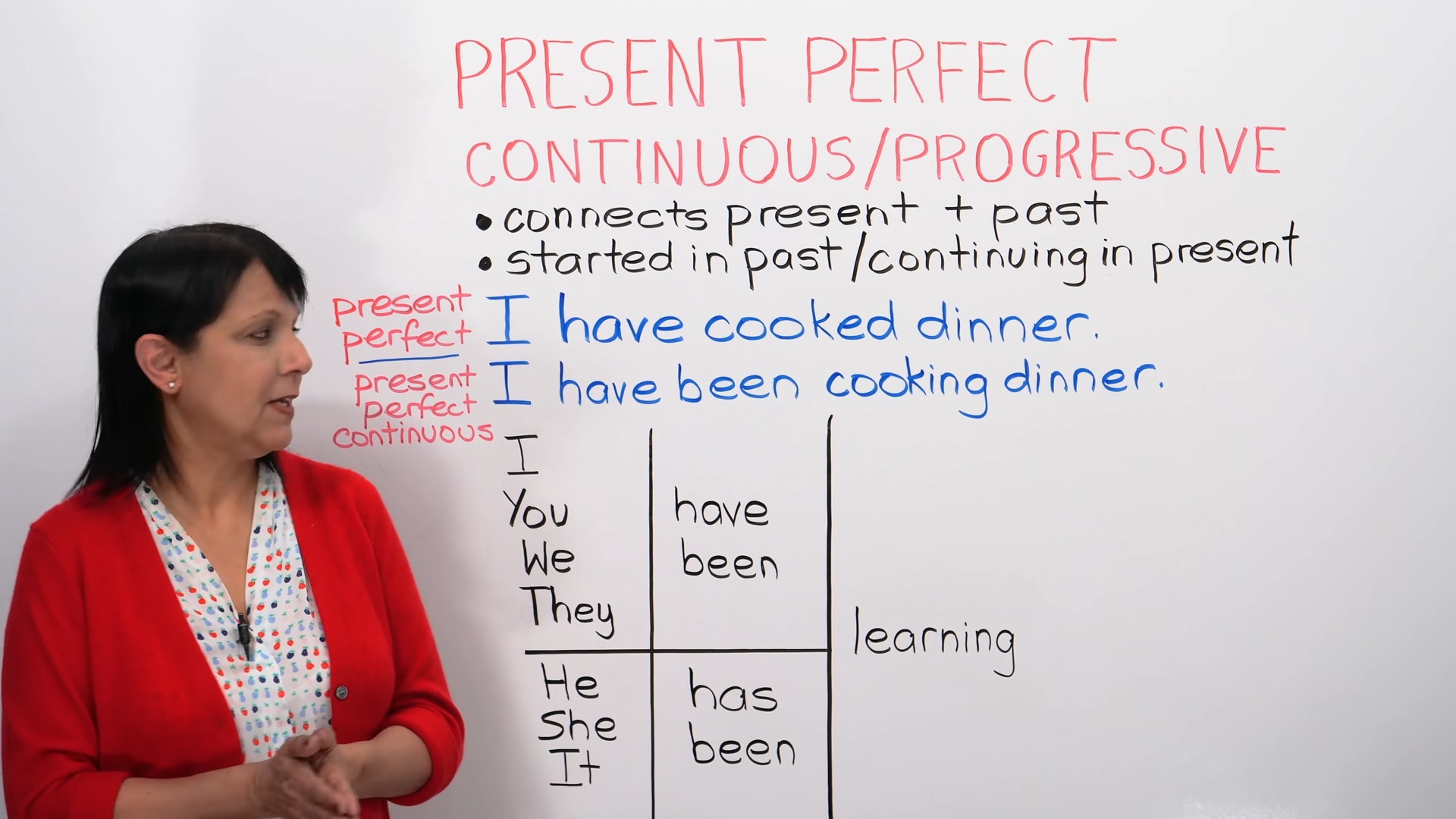

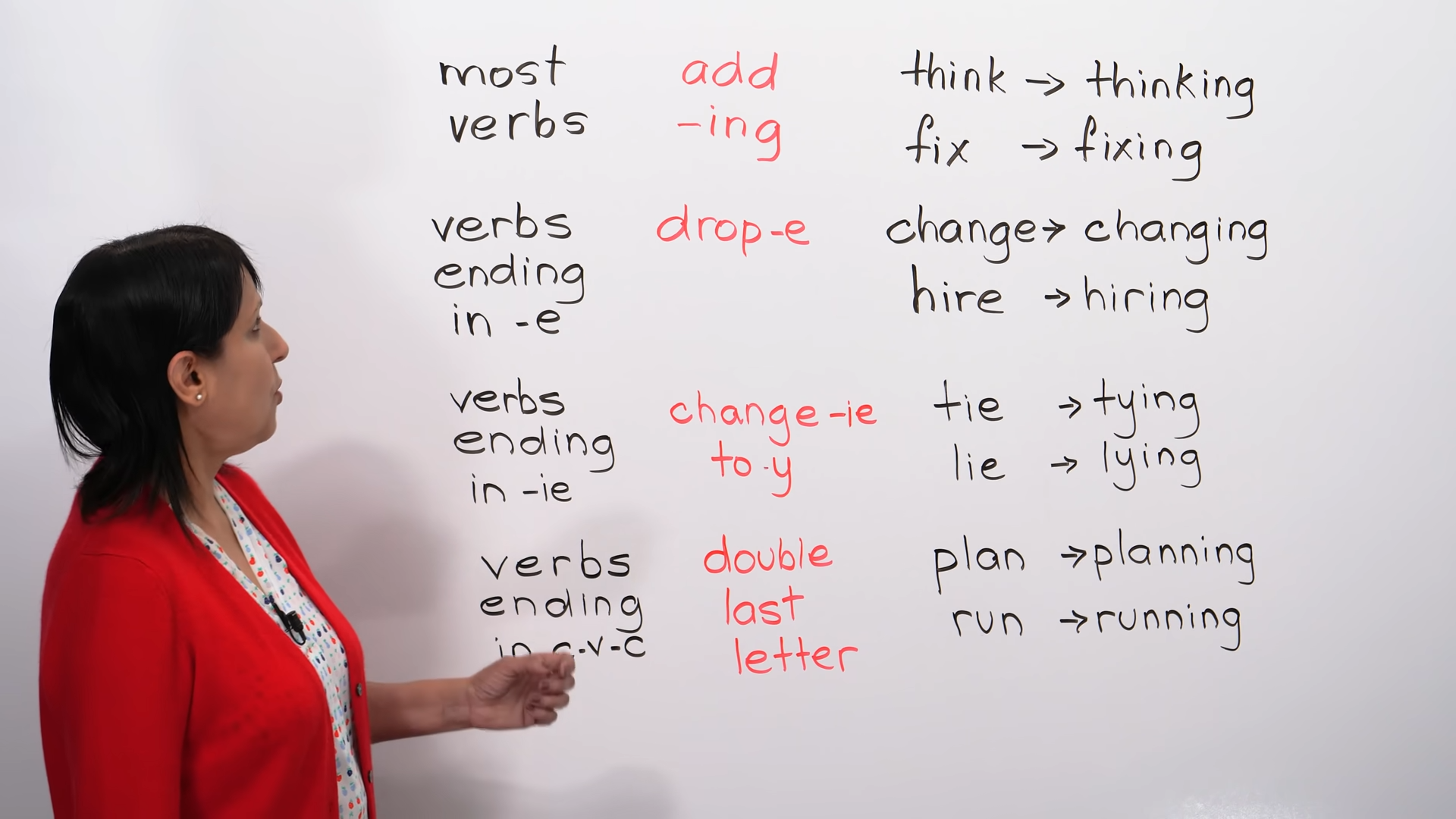

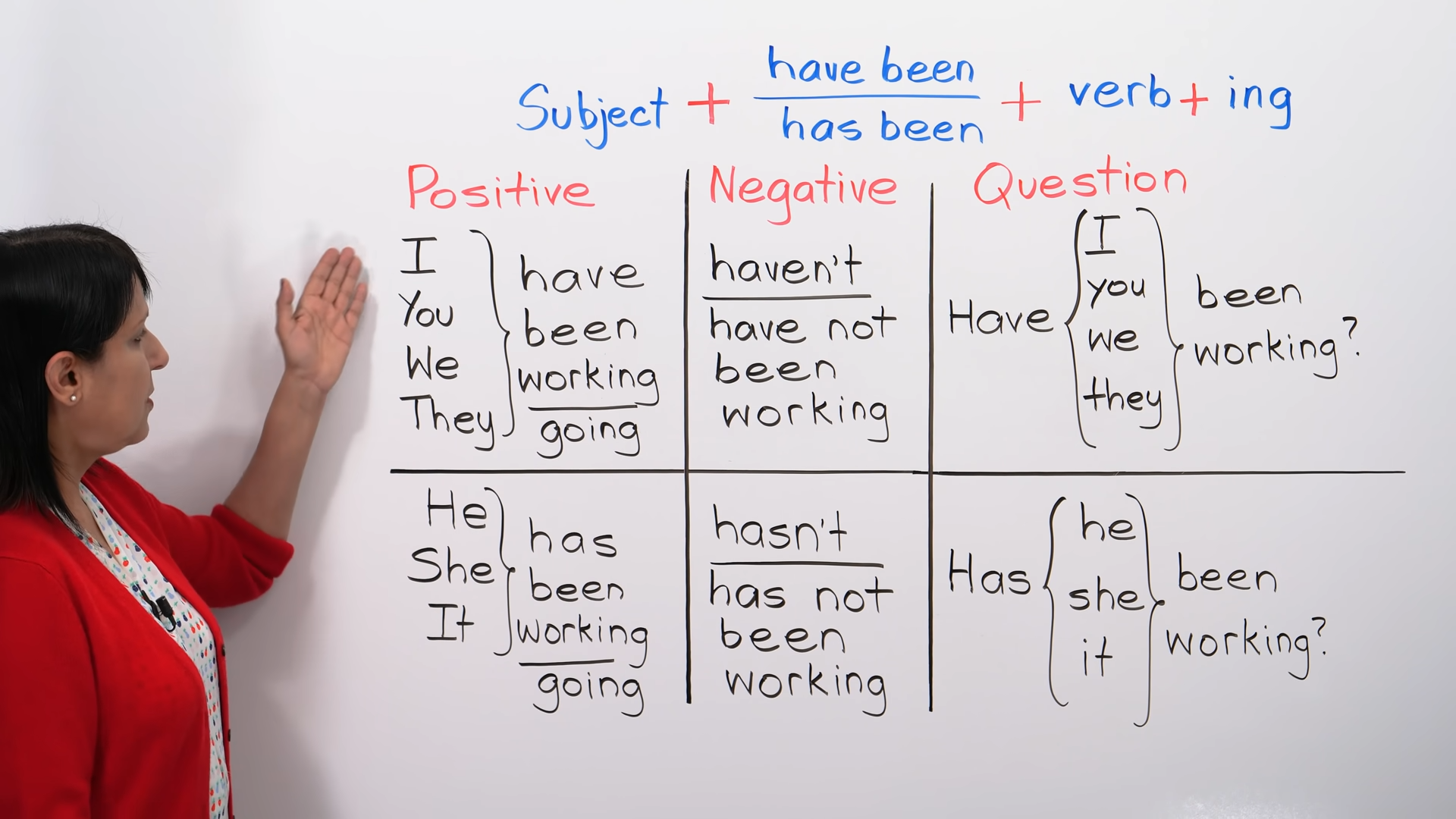

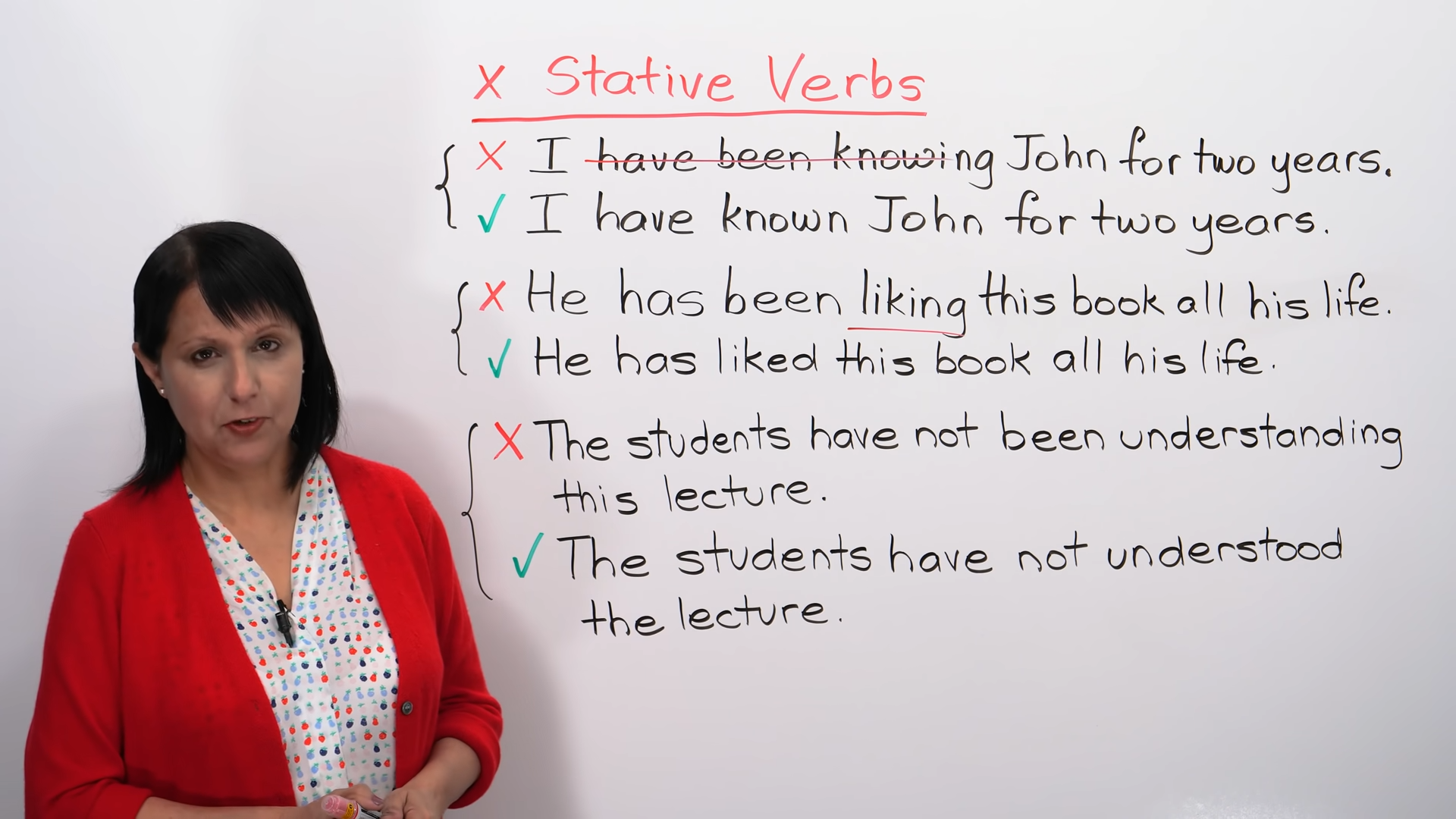

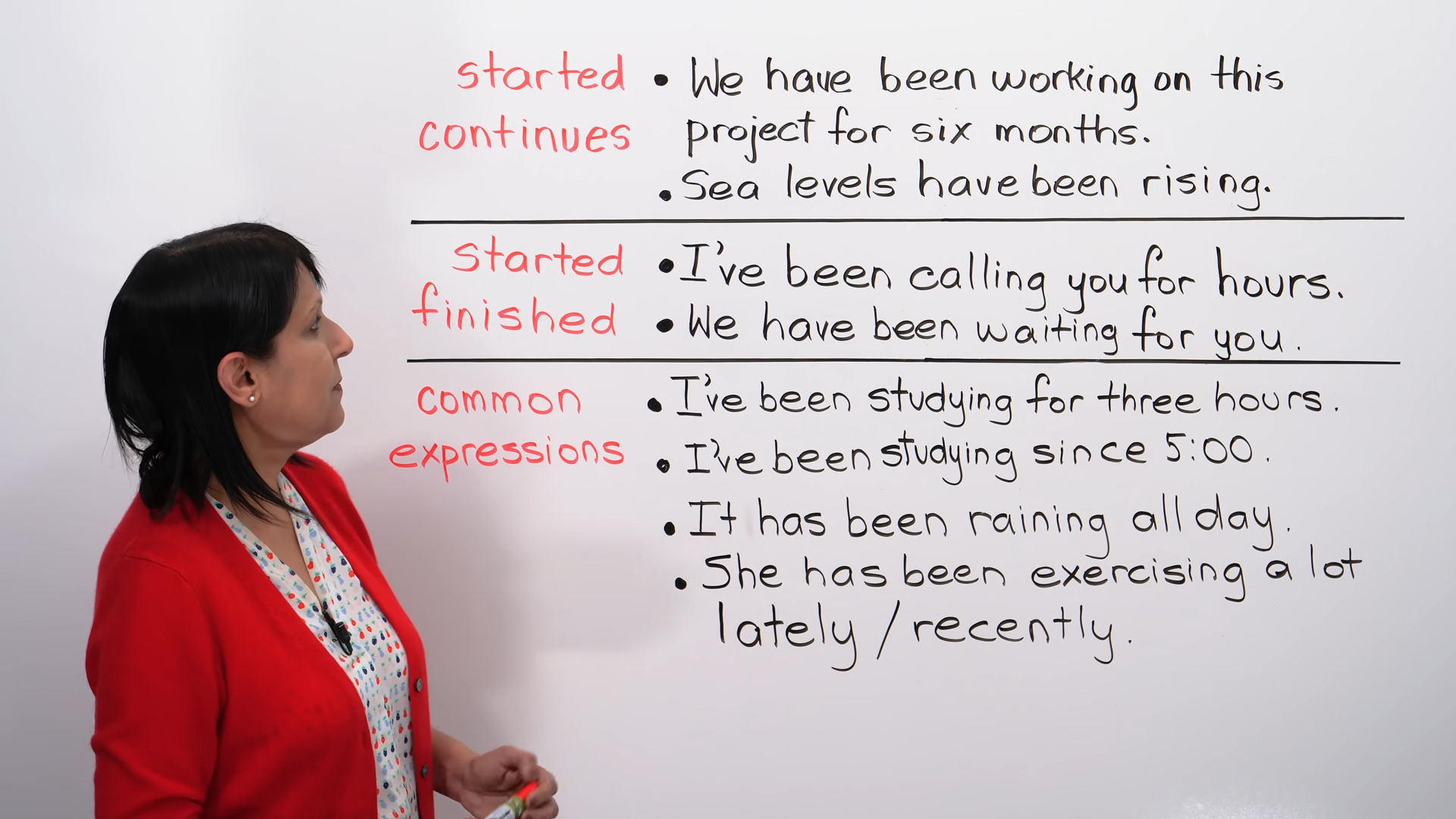

PAST PERFECT CONTINUOUS
Course Link: https://www.engvid.com/past-perfect-continuous/
So, the past perfect continuous tense is used to talk about something that started in the past and continued in the past, but everything is in the past. You also know that because it has the word "past" in it, so it's about the past, and it has the word "continuous" in it, which mean something continued. So, we can use this tense to talk about something that had been happening in the past.



















